Super Reefs
Field Notebook
January 2024
Please scroll down
By Dan Griffin, Robin Garthwait
www.GGFilms.com
Photos by Steve Palumbi and Kaiku Kahola'a
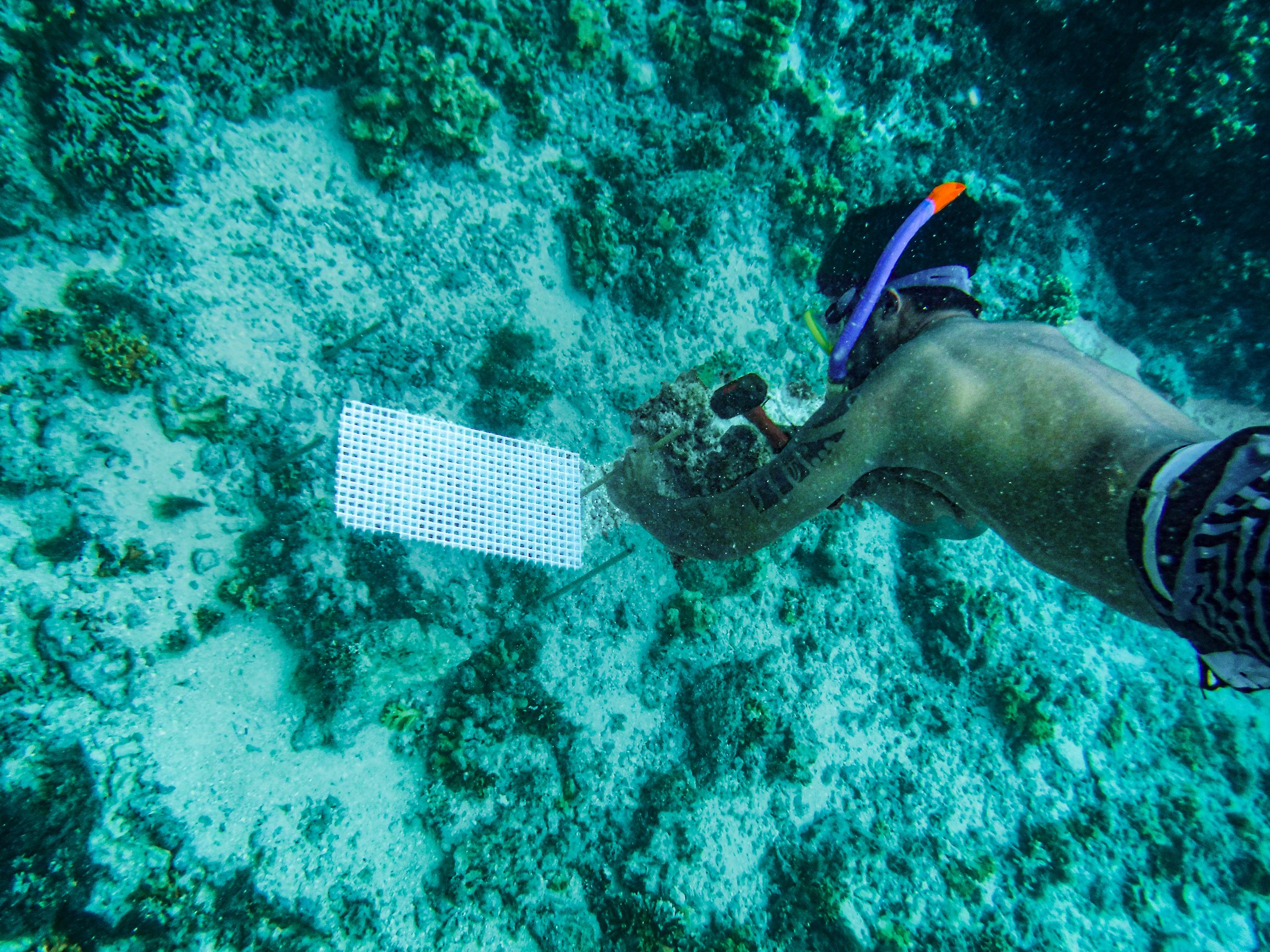
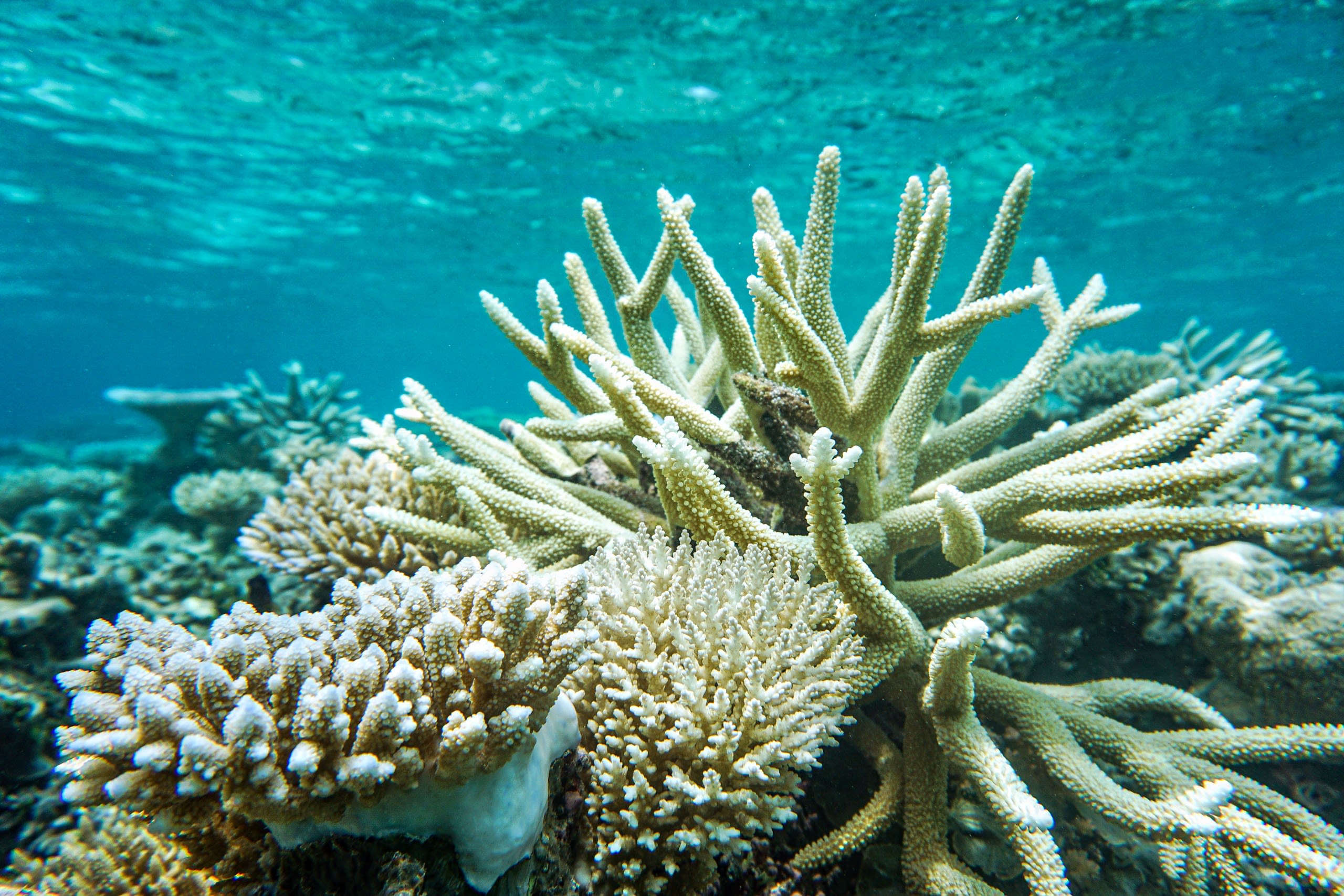
Coral garden (healthy), Majuro
Coral garden (healthy), Majuro
In 2023 field work began on Majuro Atoll in the Marshall Islands testing coral for their heat resistance.
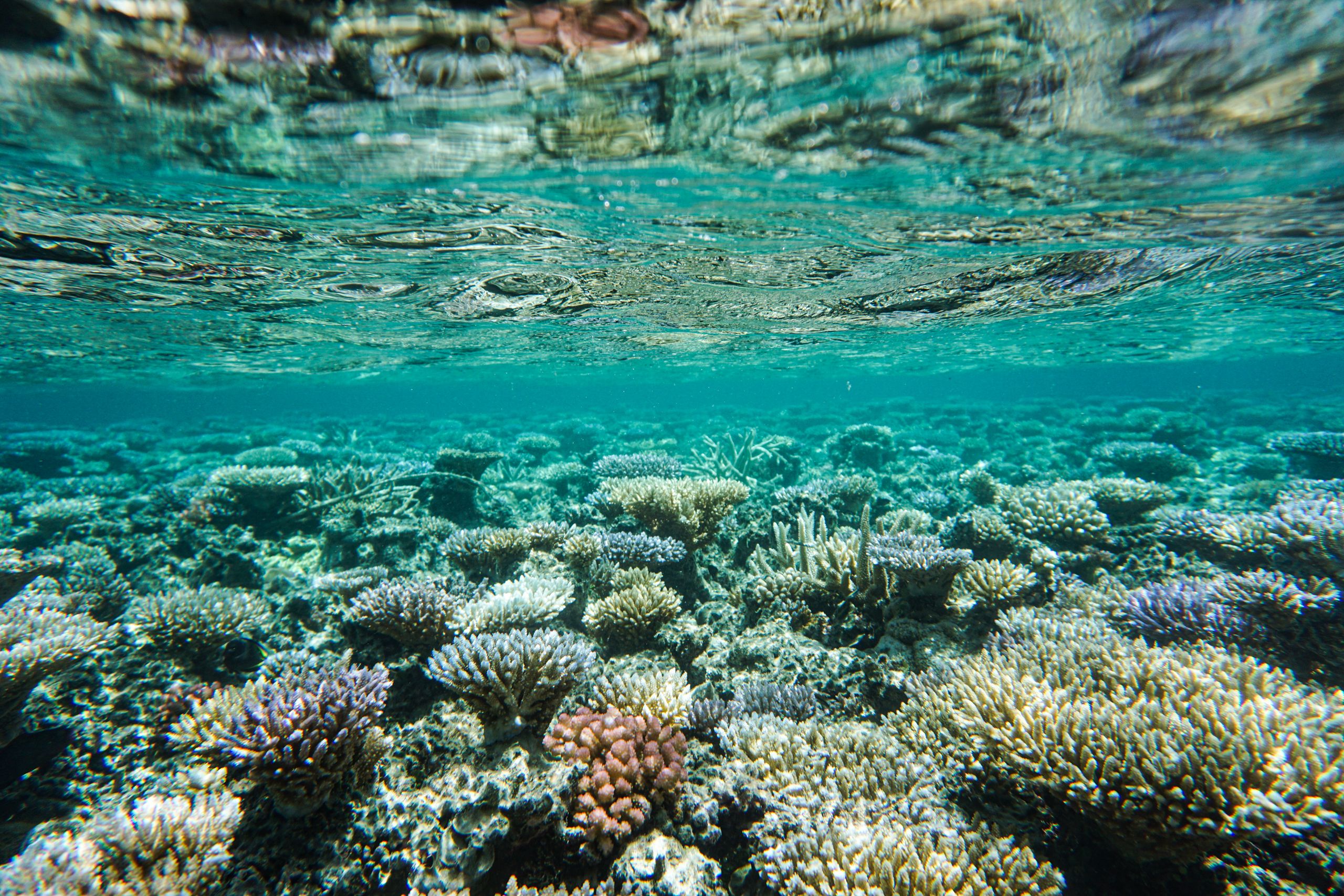
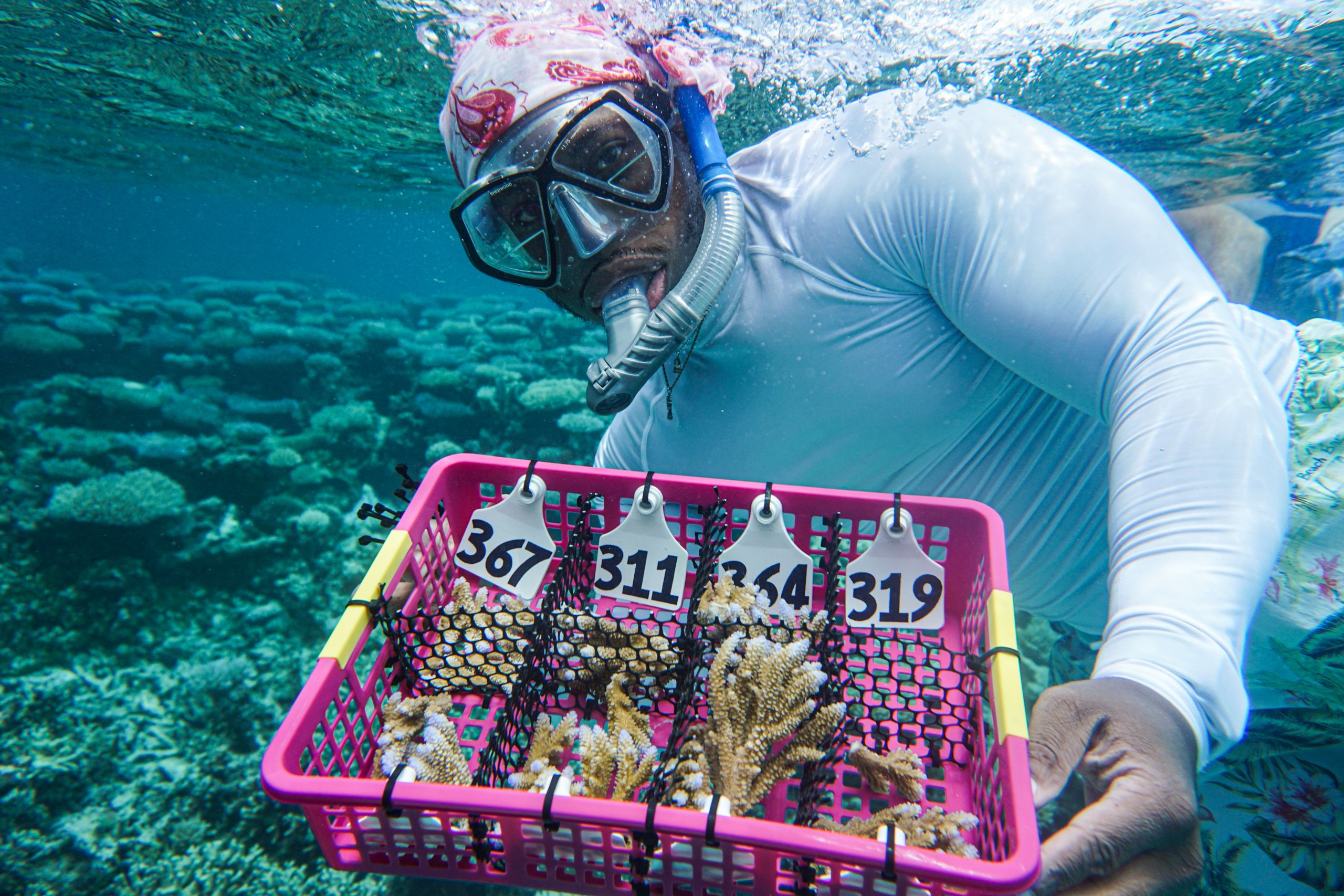
Birkirin Island, Majuro

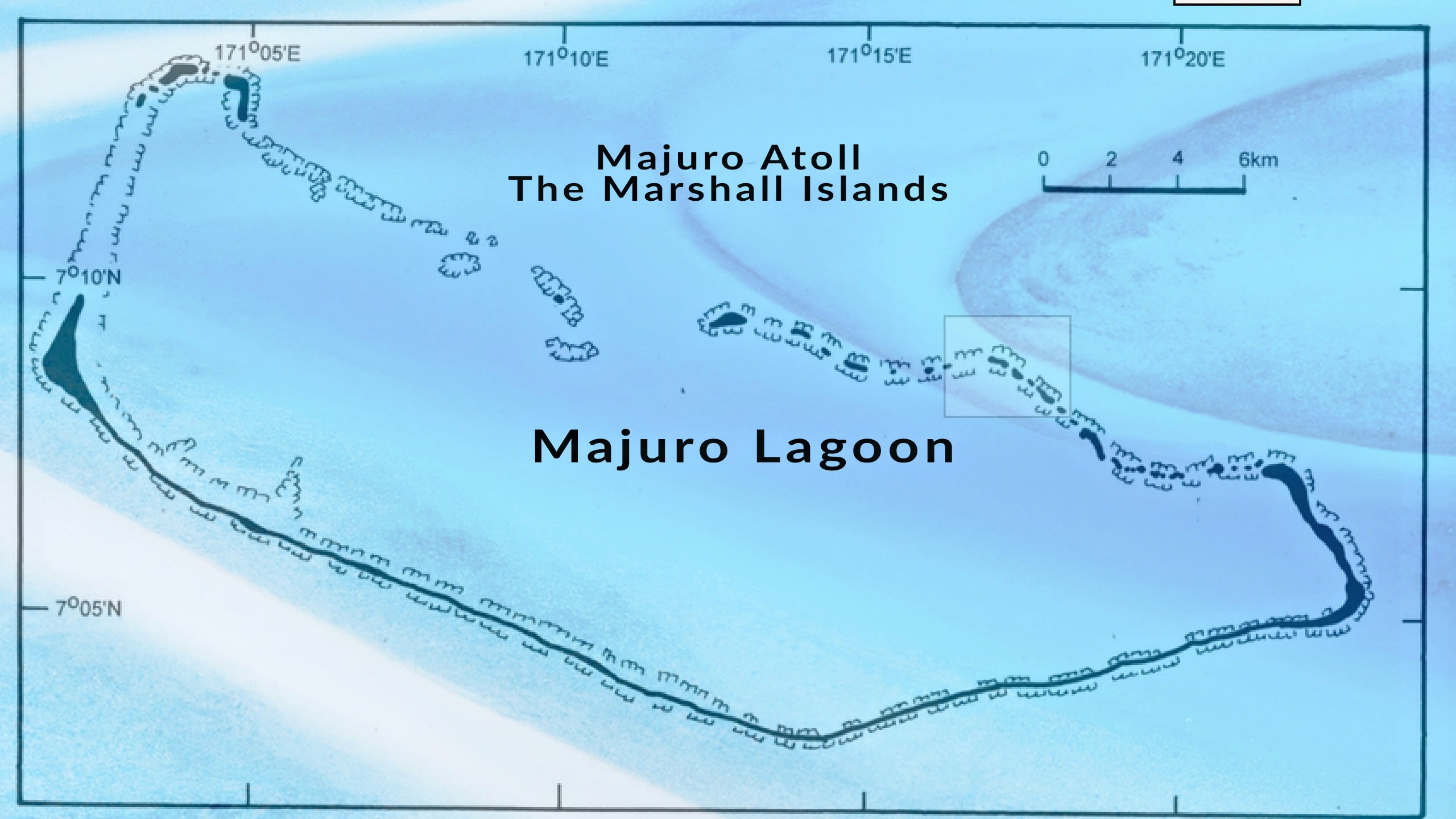
Majuro, The Marshall Islands
Majuro, The Marshall Islands
Located on the northern-most edge of the Majuro Atoll, Birkirin Island is privately owned. Decades ago the family created a defacto MPA.
After an introduction to the Birkirin Island family from Dolores Debrum-Cattil, Director of the Marshall Island Conservation Society (MICS), the Palumbi team went to visit the island.
1. ENCOUNTERING
When we first joined family members on Birkirin Island, they explained how their grandparents brought them here to visit, enjoy and protect it, and how much they too wanted to bring their own grandchildren here some day.
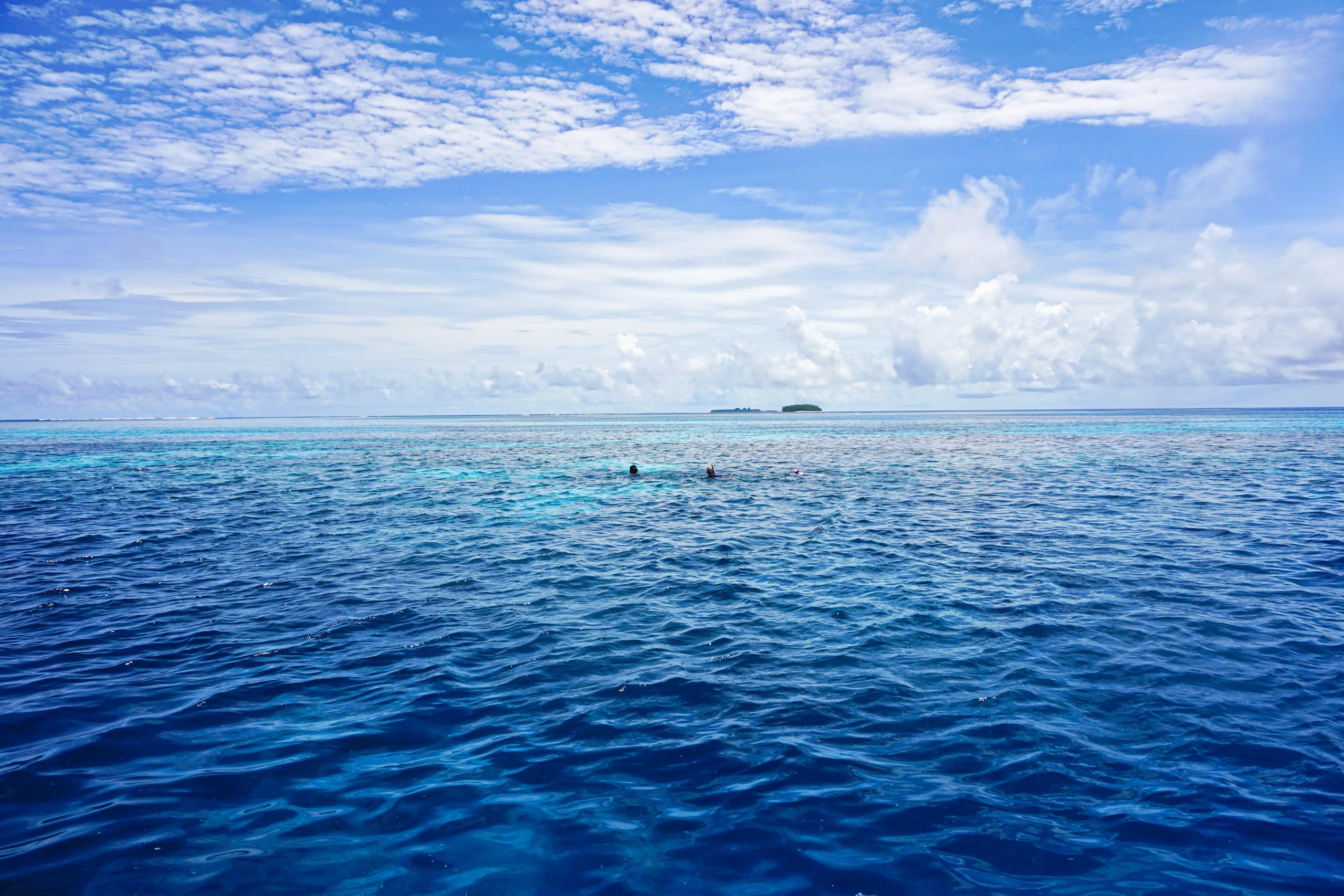
The view from Birkirin Island, Majuro
The view from Birkirin Island, Majuro
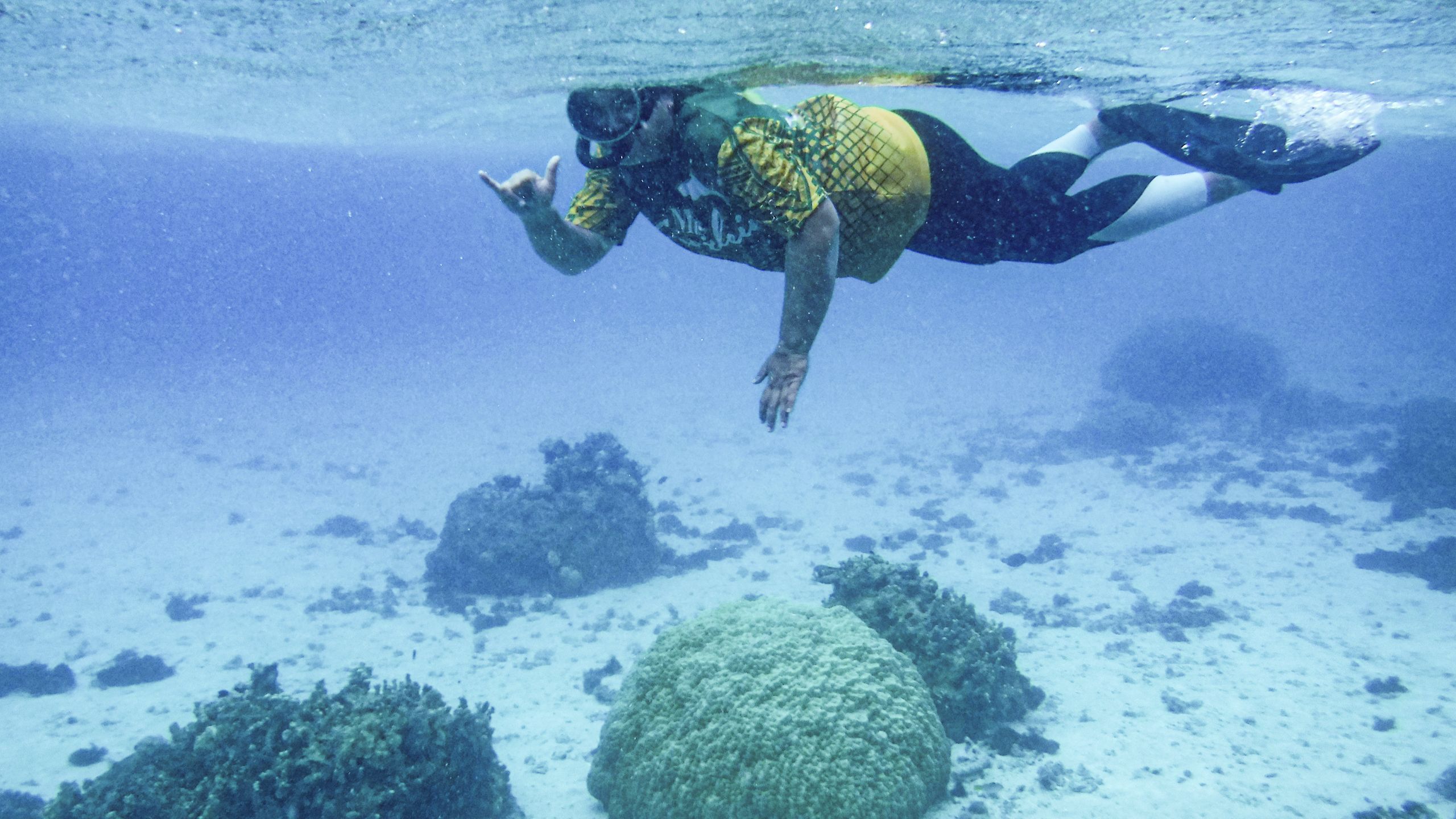
Chloe Abraham, Birkirin Island family member, Birkirin Island, Majuro
Chloe Abraham, Birkirin Island family member, Birkirin Island, Majuro
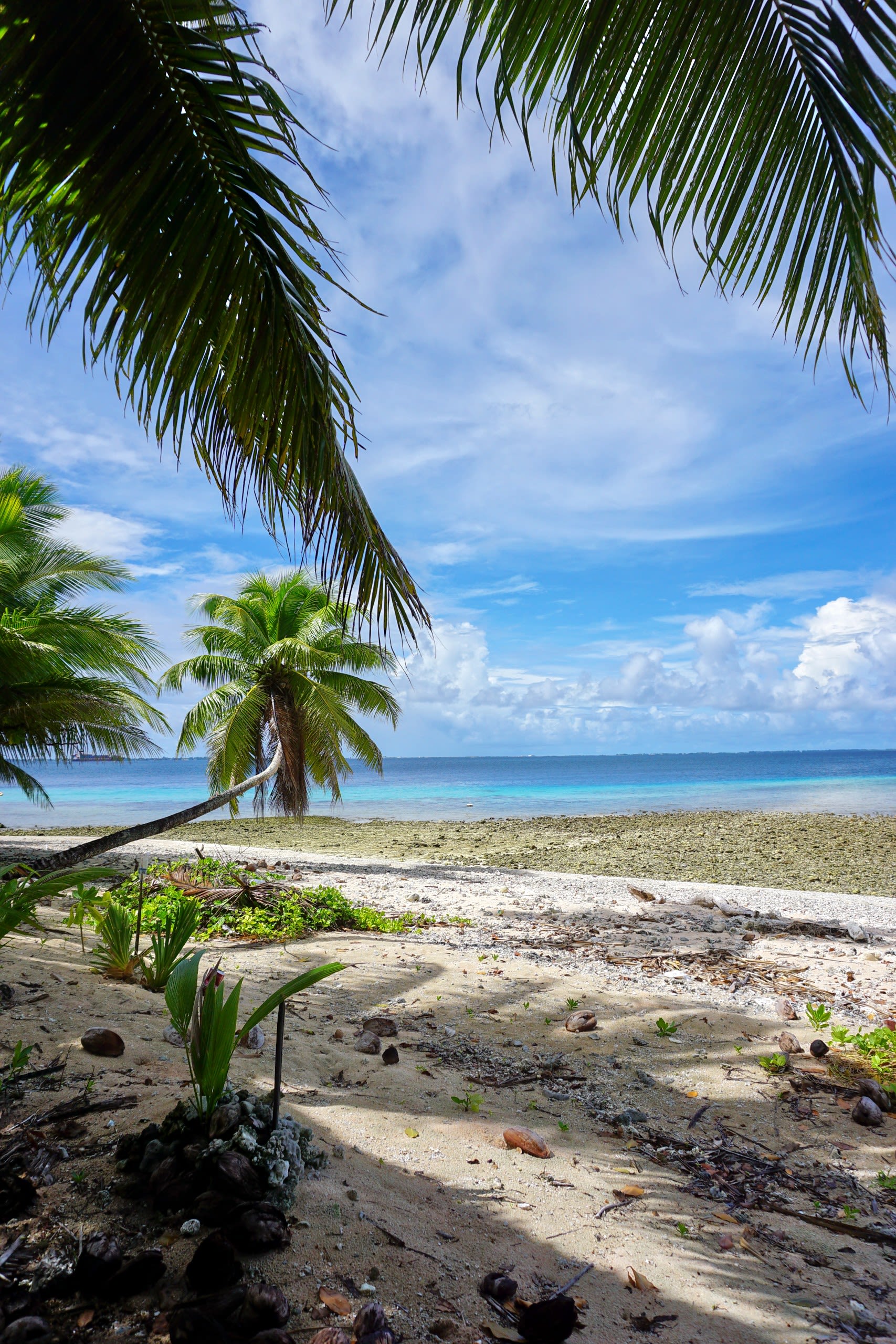
Birkirin Island, Majuro
Birkirin Island, Majuro
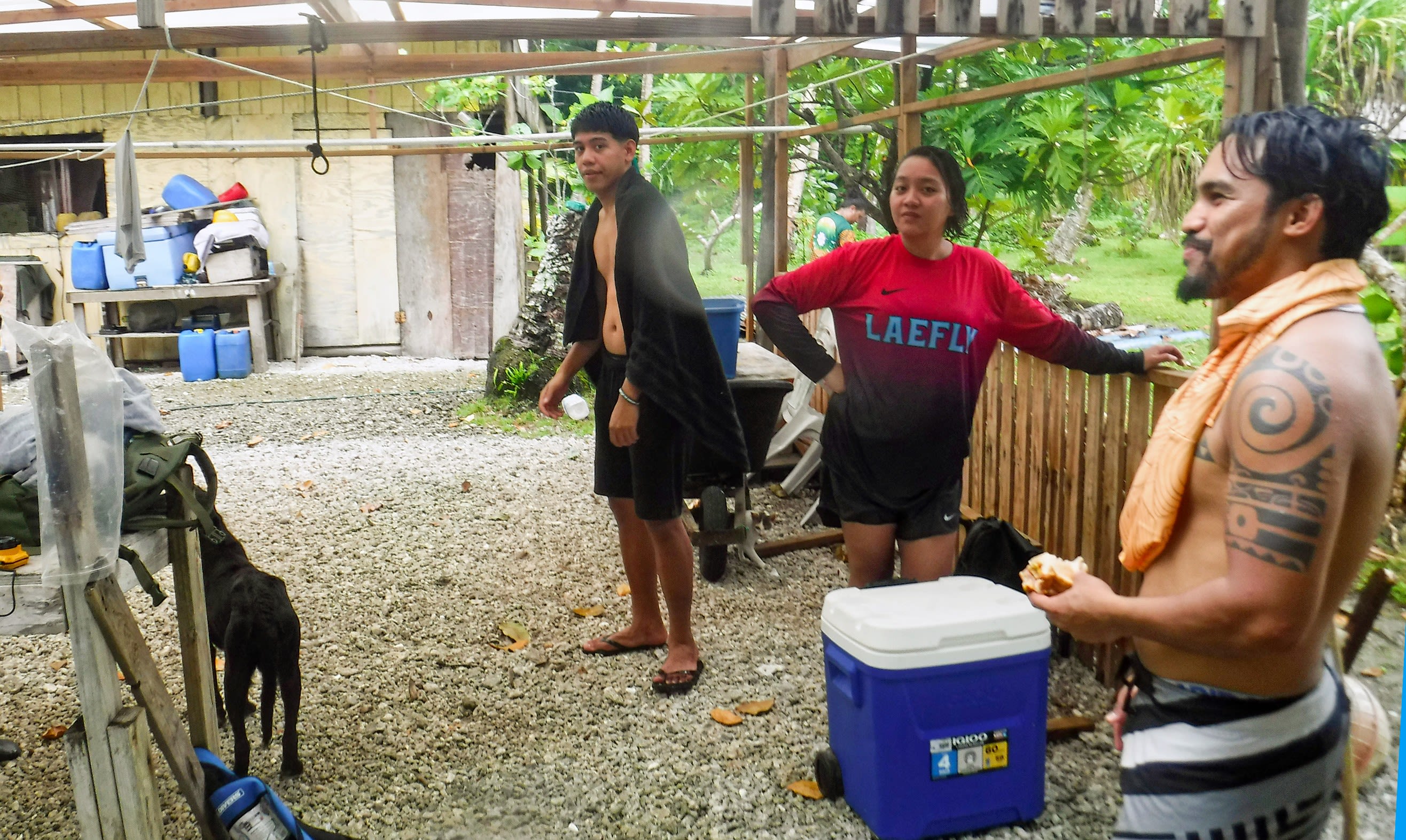
(M to R) Chloe Abraham, Enoka Nipp, Birkirin Island family members, Birkirin Island, Majuro
(M to R) Chloe Abraham, Enoka Nipp, Birkirin Island family members, Birkirin Island, Majuro
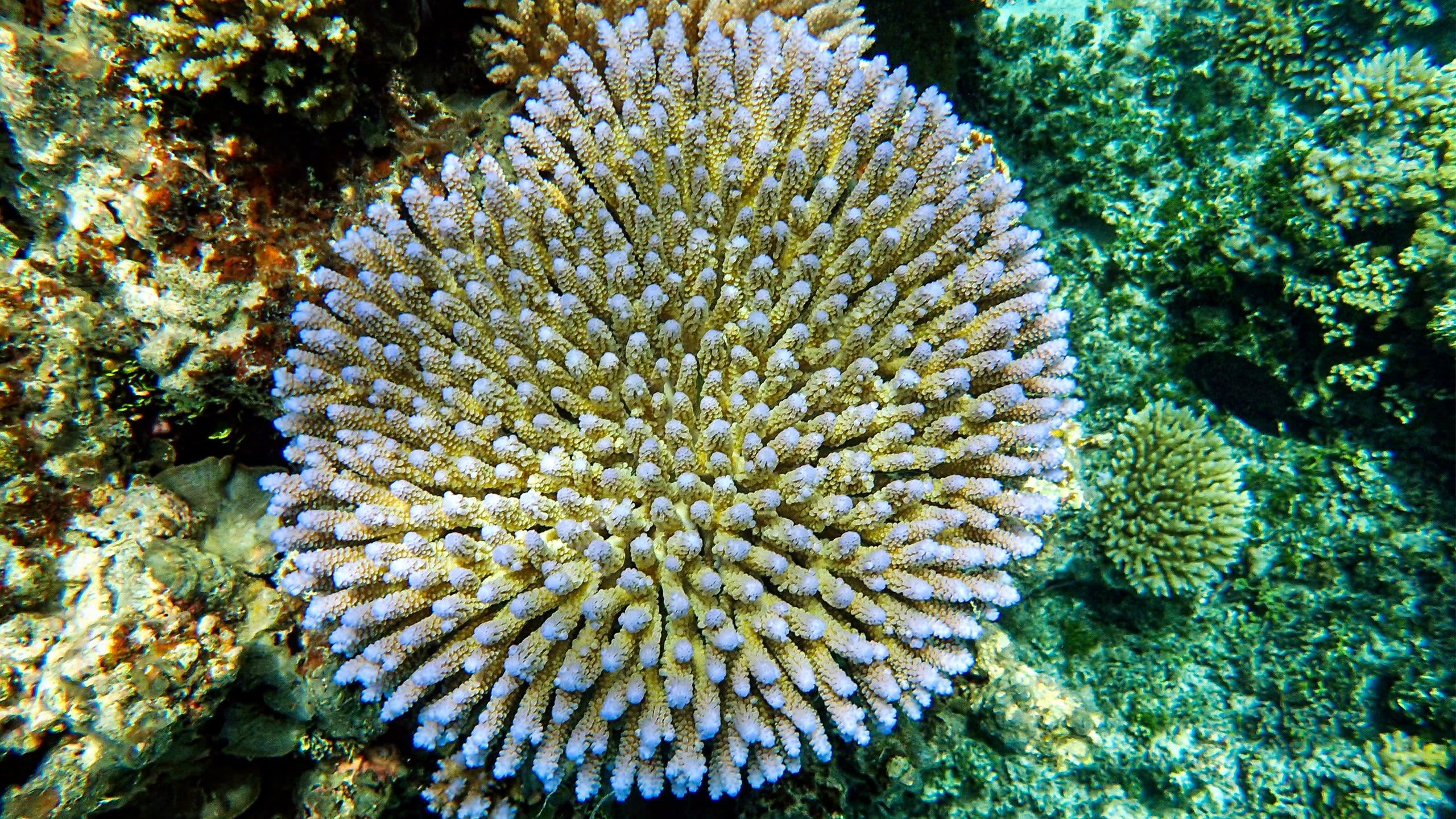
Acropora digitifera, Birkirin Island, Majuro
Acropora digitifera, Birkirin Island, Majuro
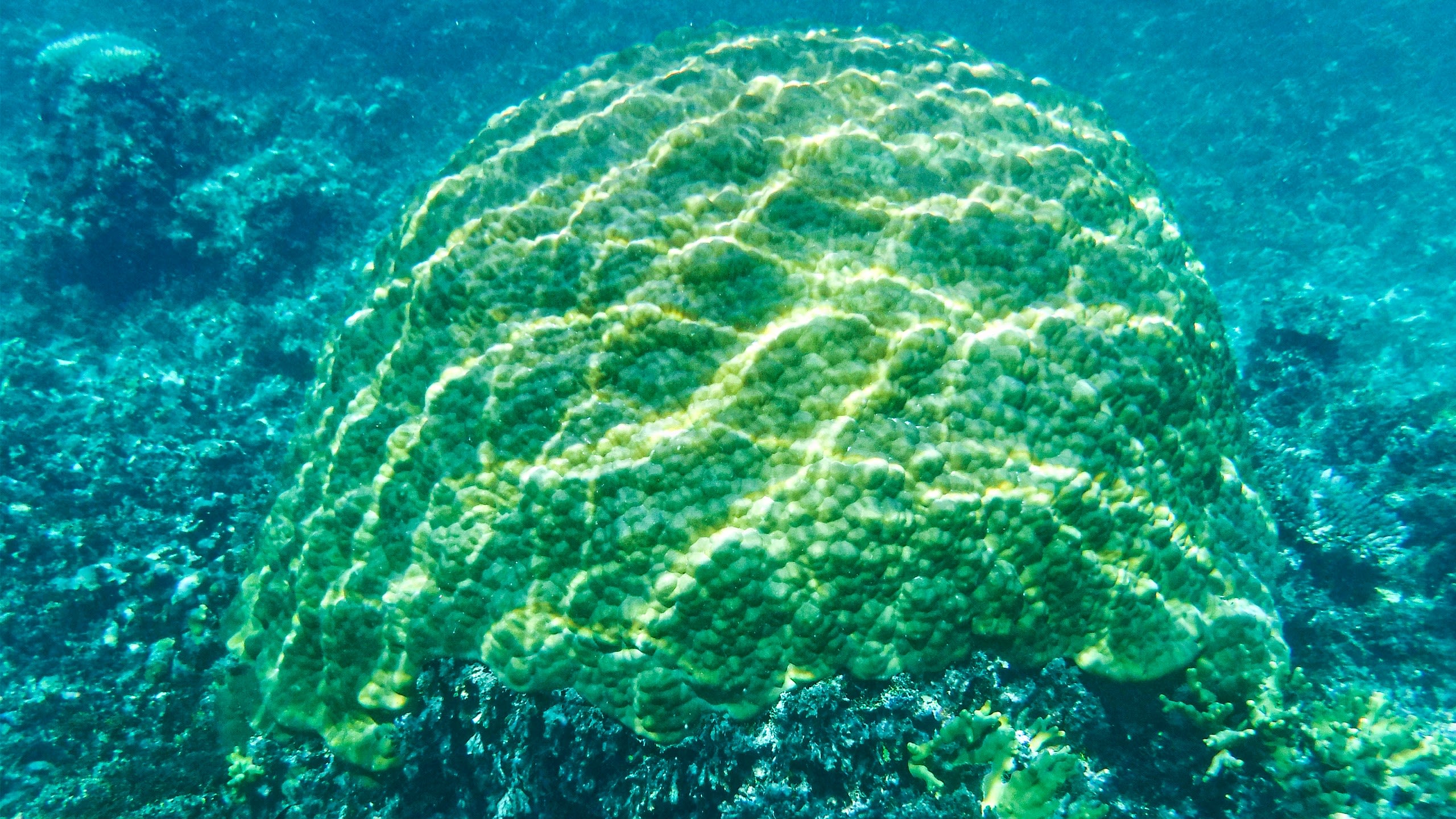
Porites lobata, Birkirin Island, Majuro
Porites lobata, Birkirin Island, Majuro
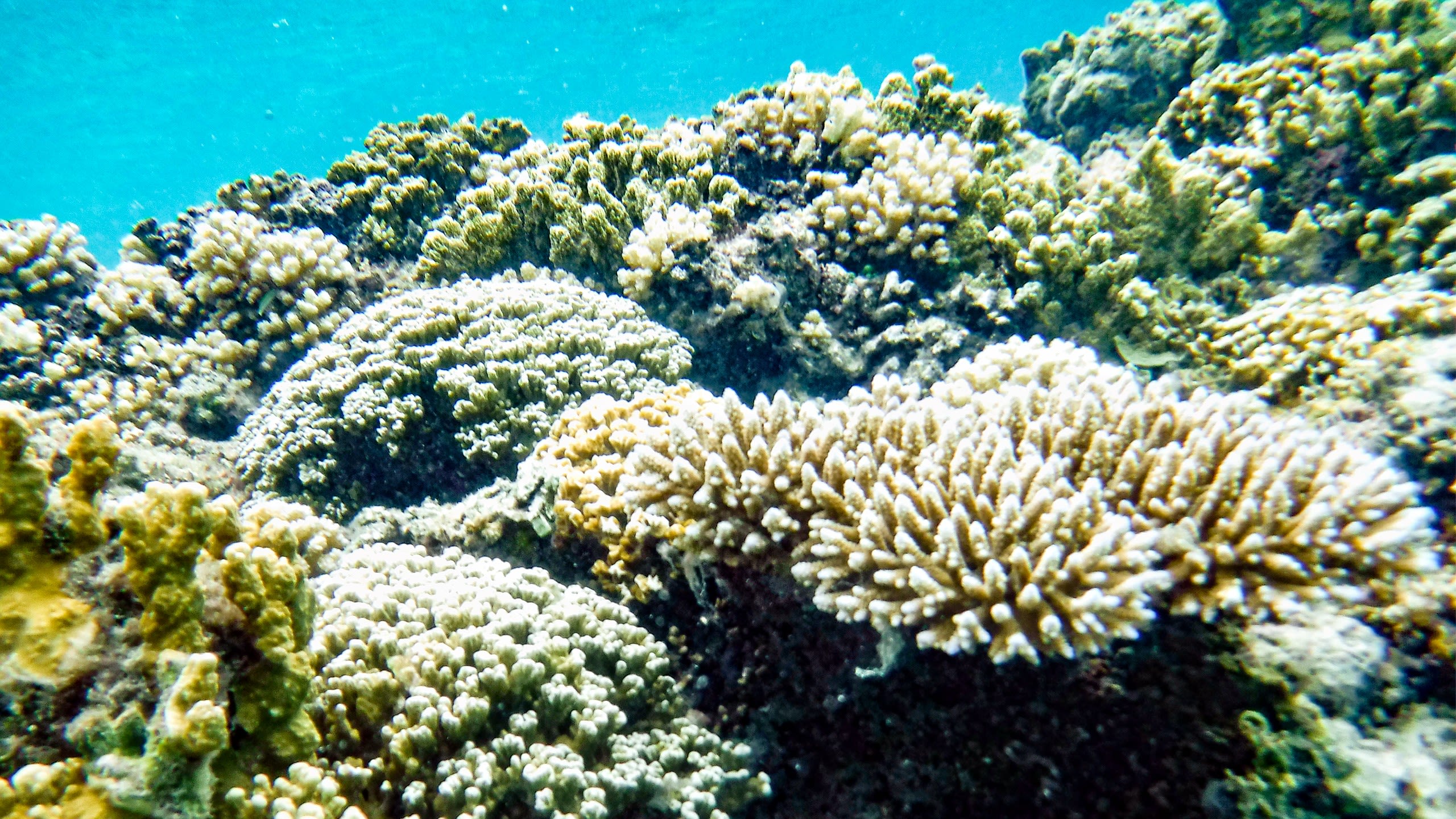
Coral garden, Birkirin Island, Majuro
Coral garden, Birkirin Island, Majuro
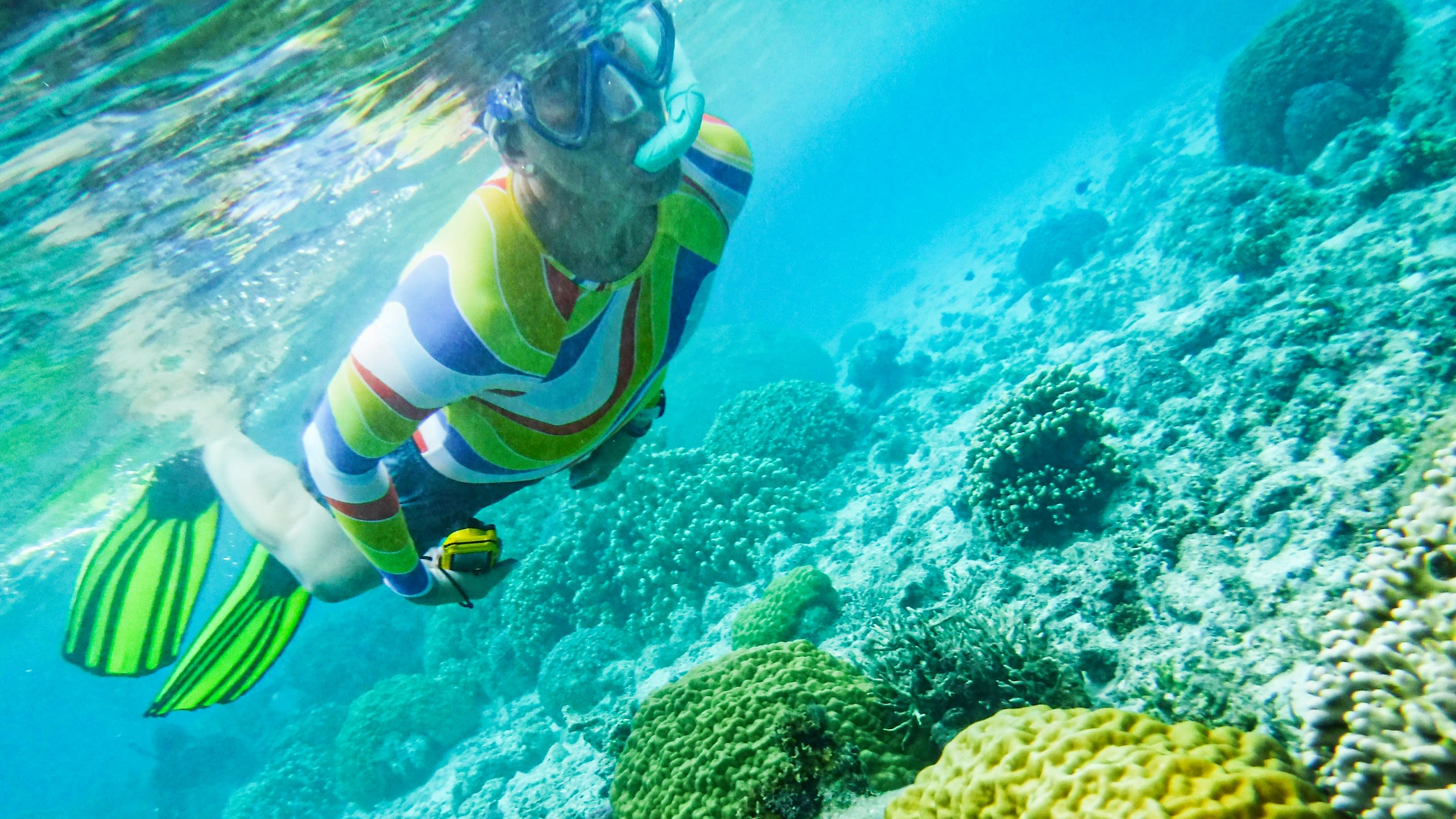
Courtney Klepac, Postdoc researcher, Palumbi Lab, Stanford University, Birkirin Island, Majuro
Courtney Klepac, Postdoc researcher, Palumbi Lab, Stanford University, Birkirin Island, Majuro
2. CONSULTING
The family asked if we could check the health of the corals around the island.
How would the corals fare in future heat waves?
Would the corals bleach?
What could they do to help the corals and the island?
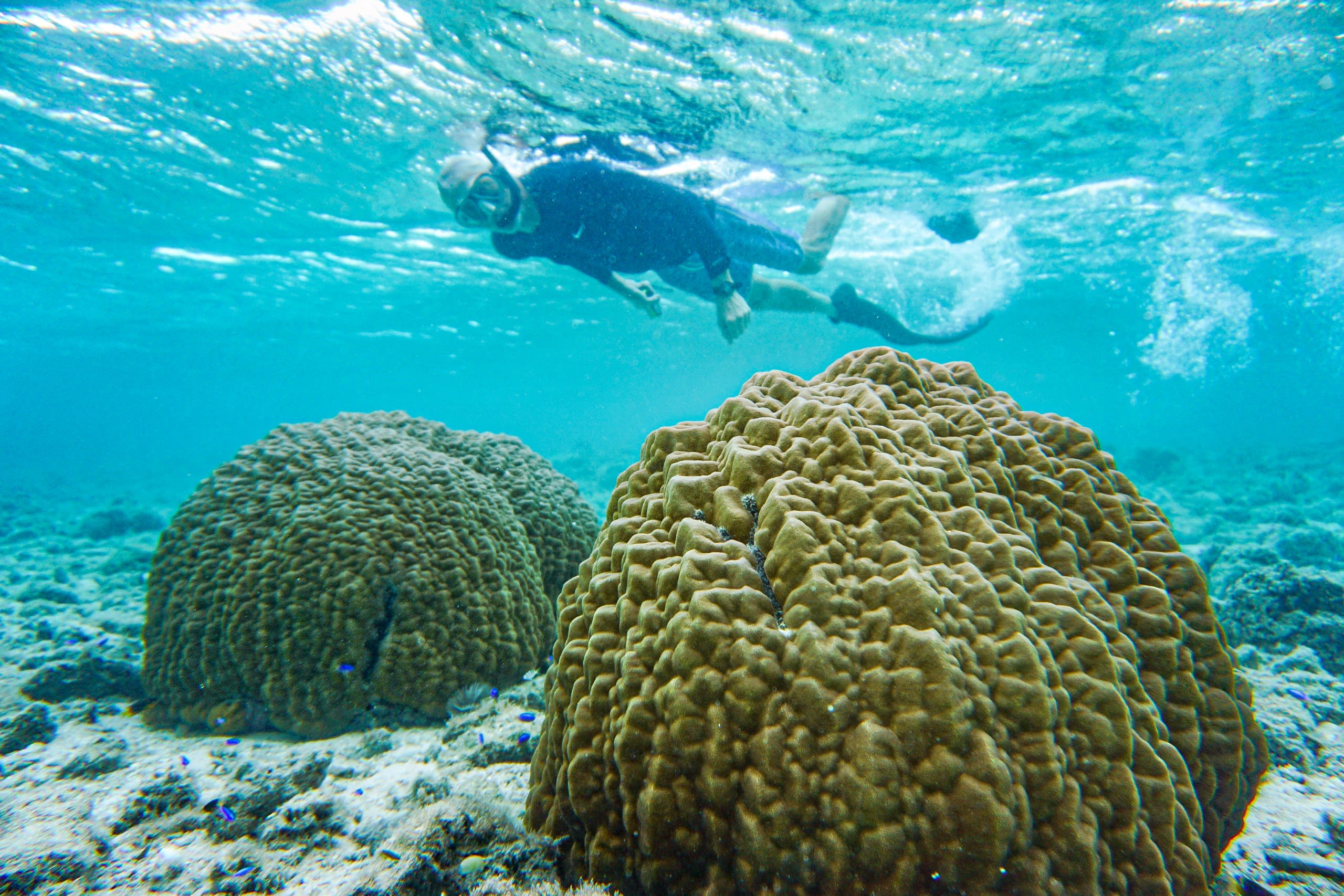
Swimming at site SR4 (not Birkin Island), Steve Palumbi, Palumbi Lab, Stanford University, Majuro
Swimming at site SR4 (not Birkin Island), Steve Palumbi, Palumbi Lab, Stanford University, Majuro
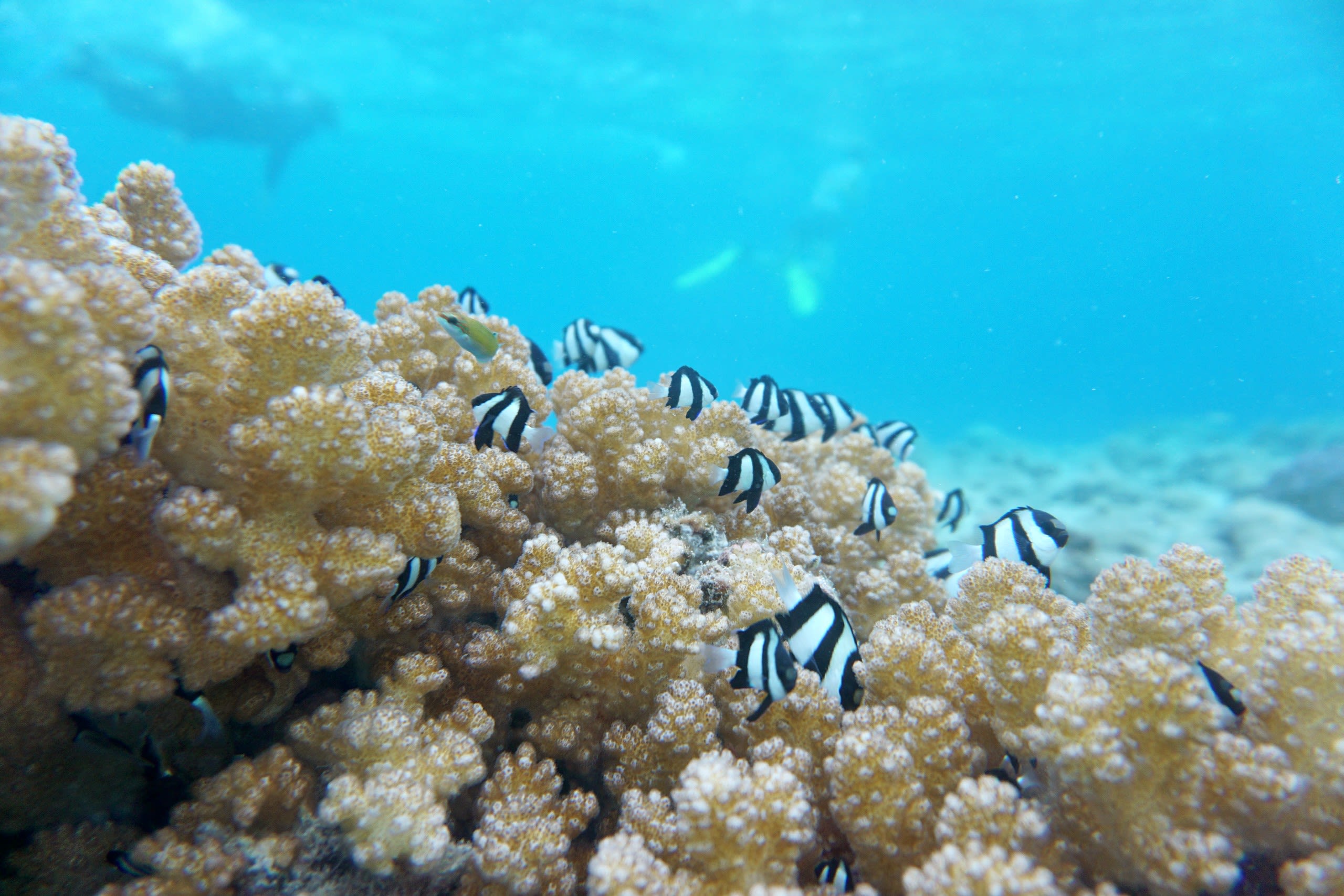
Humbug Dascyllus in Pocillopora colony, Birkirin Island, Majuro
Humbug Dascyllus in Pocillopora colony, Birkirin Island, Majuro
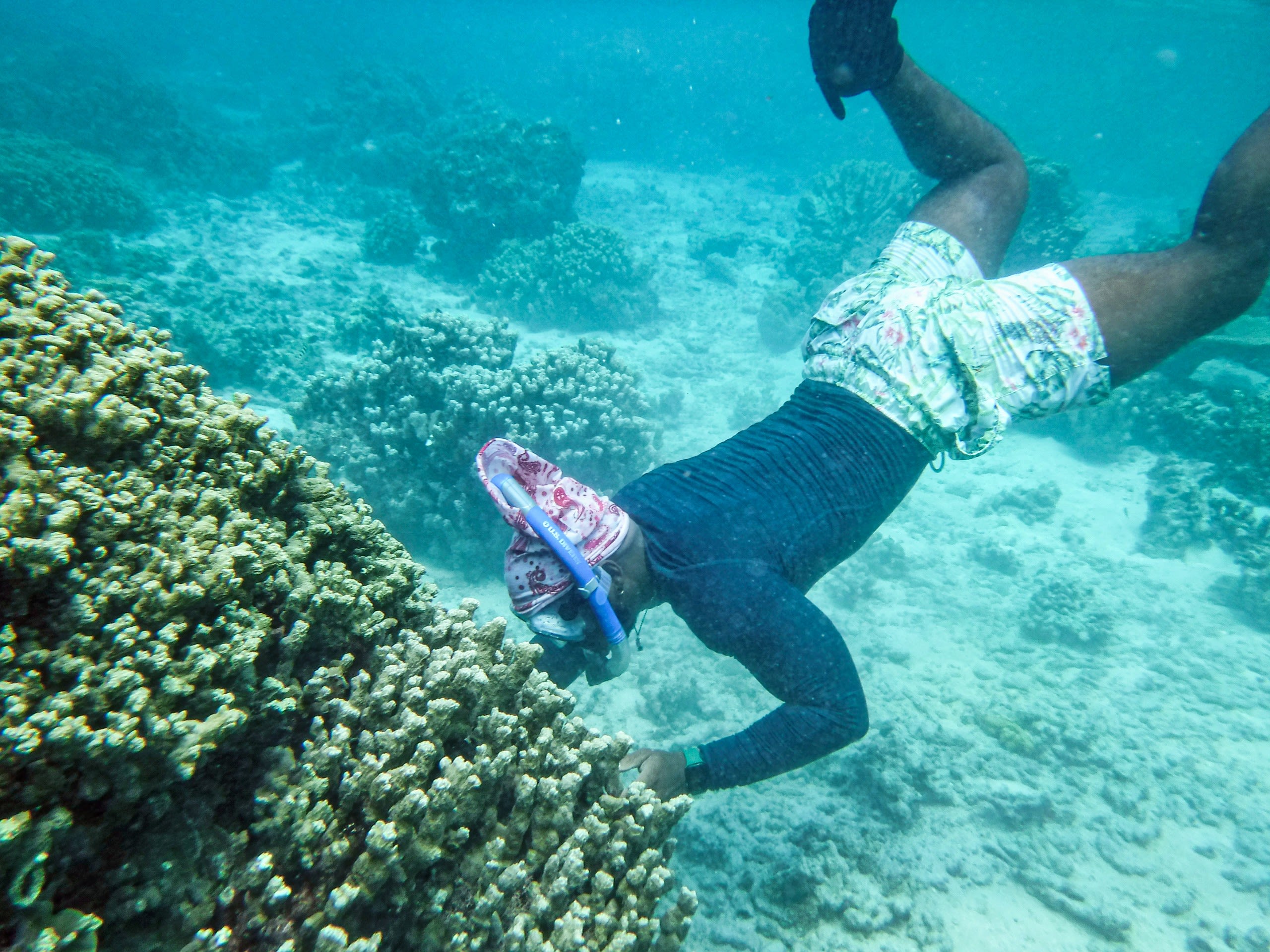
DeVante Dawson, Postdoc researcher, Palumbi Lab, Stanford University, Birkirin Island, Majuro
DeVante Dawson, Postdoc researcher, Palumbi Lab, Stanford University, Birkirin Island, Majuro
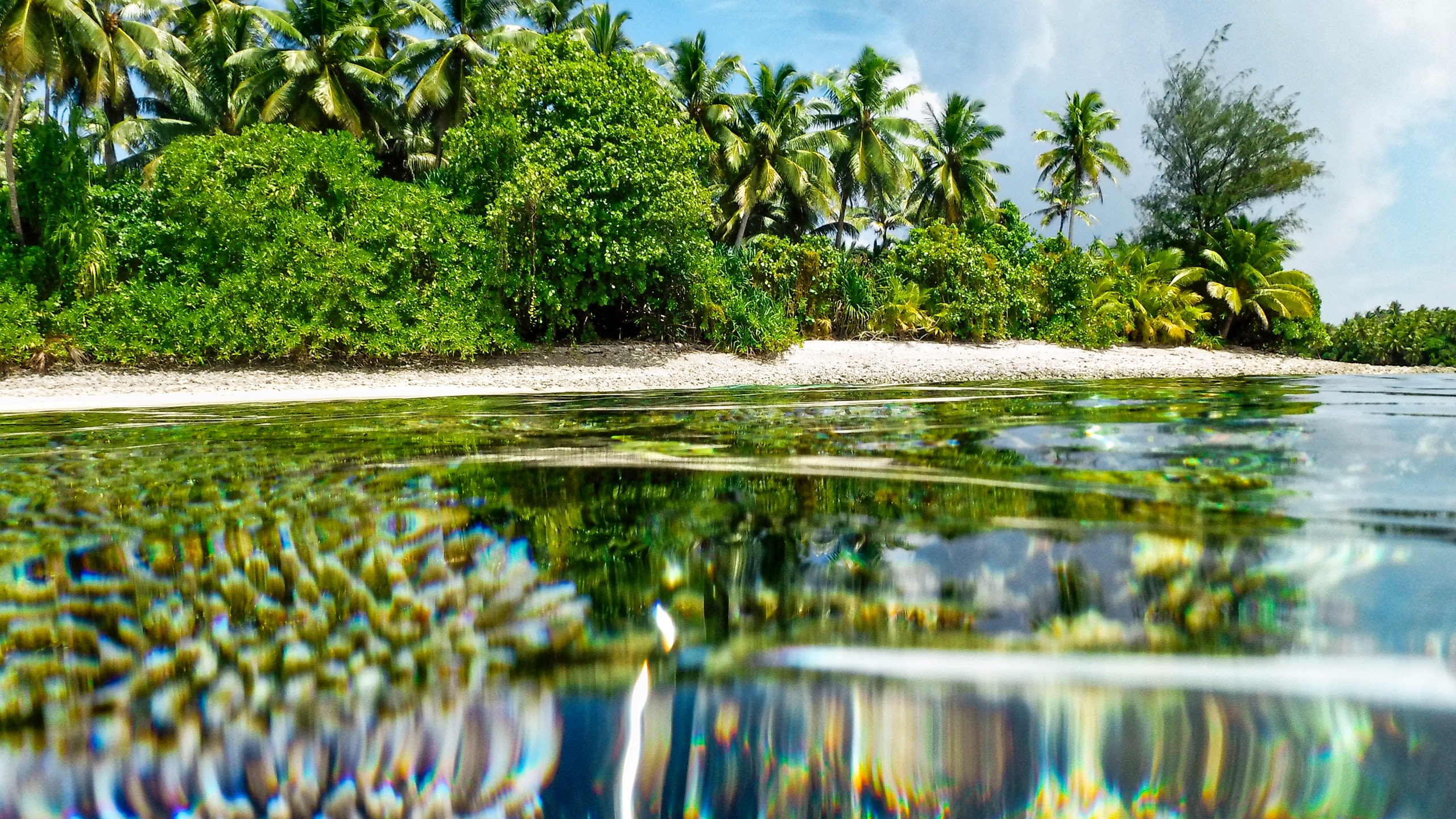
Birkirin Island, Majuro
Birkirin Island, Majuro
3. SAMPLING
From around the island, we sampled small fragments of four coral species (Acropora digitifera; Pocillopora meandrina; Porites lobata; Porites rus) and transported them across the atoll to the testing center on Sherwood Tibon’s dock.
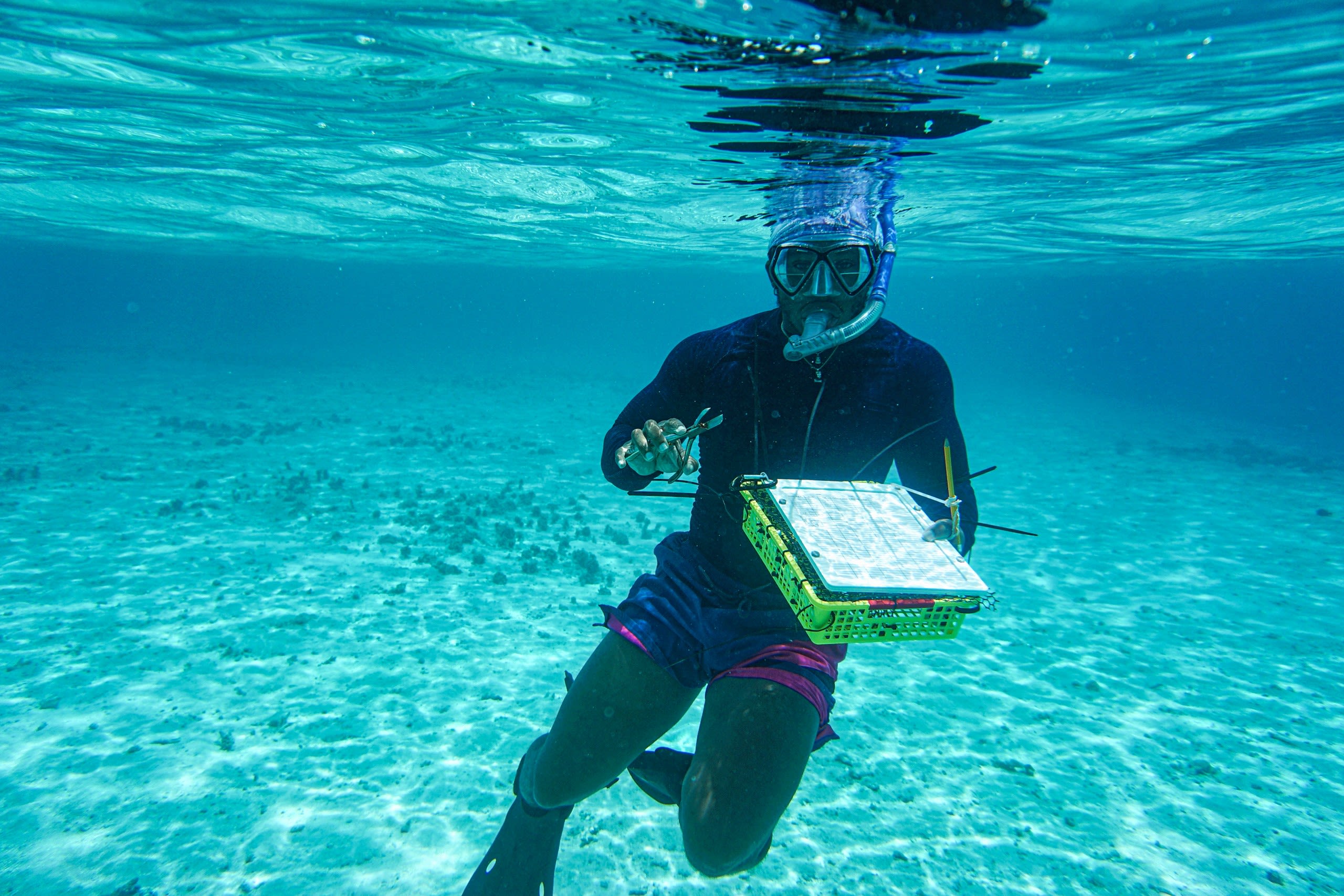
Coral sampling, DeVante Dawson, Postdoc researcher, Palumbi Lab, Stanford University, Birkirin Island, Majuro
Coral sampling, DeVante Dawson, Postdoc researcher, Palumbi Lab, Stanford University, Birkirin Island, Majuro
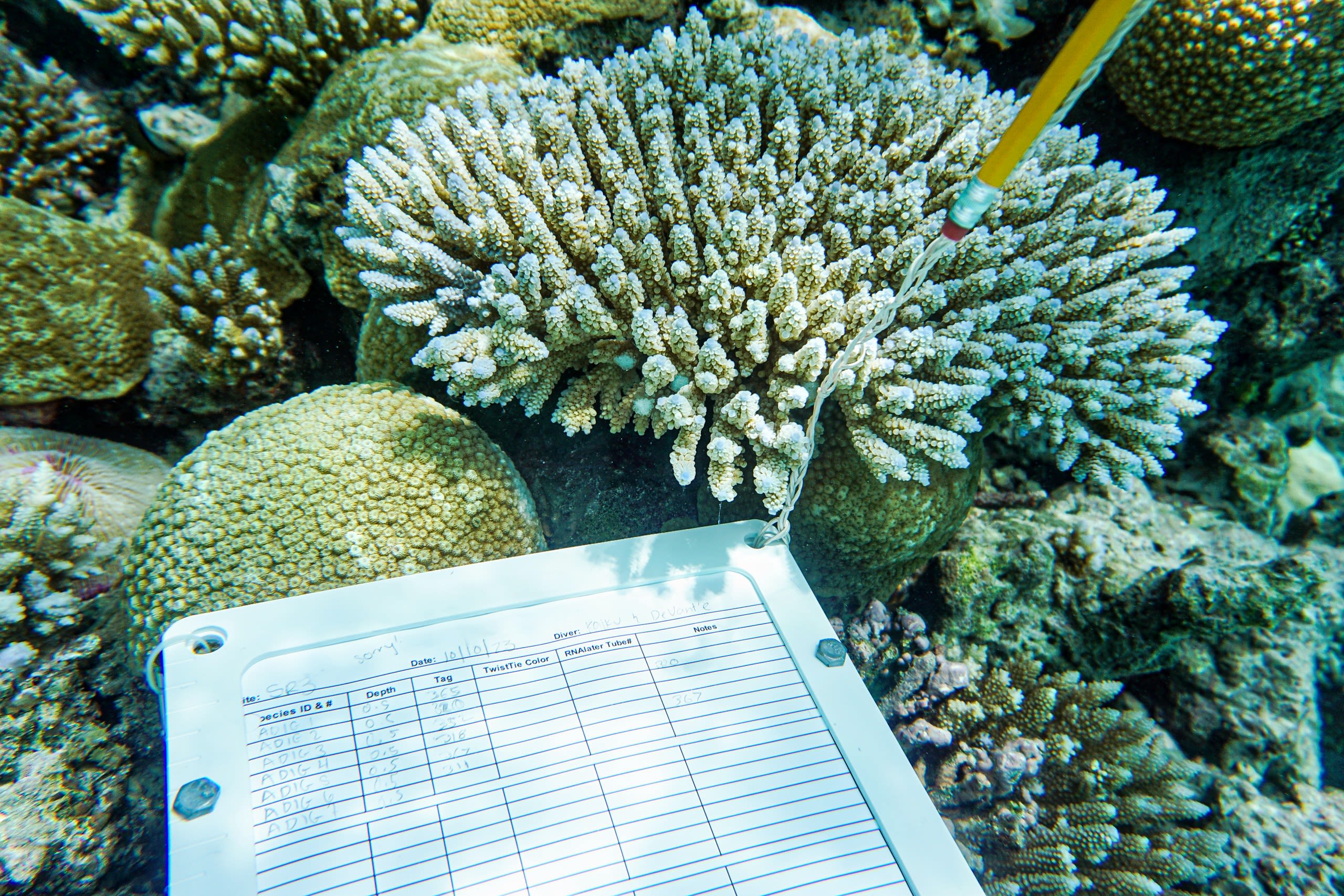
Coral sampling at site SR3, Majuro
Coral sampling at site SR3, Majuro
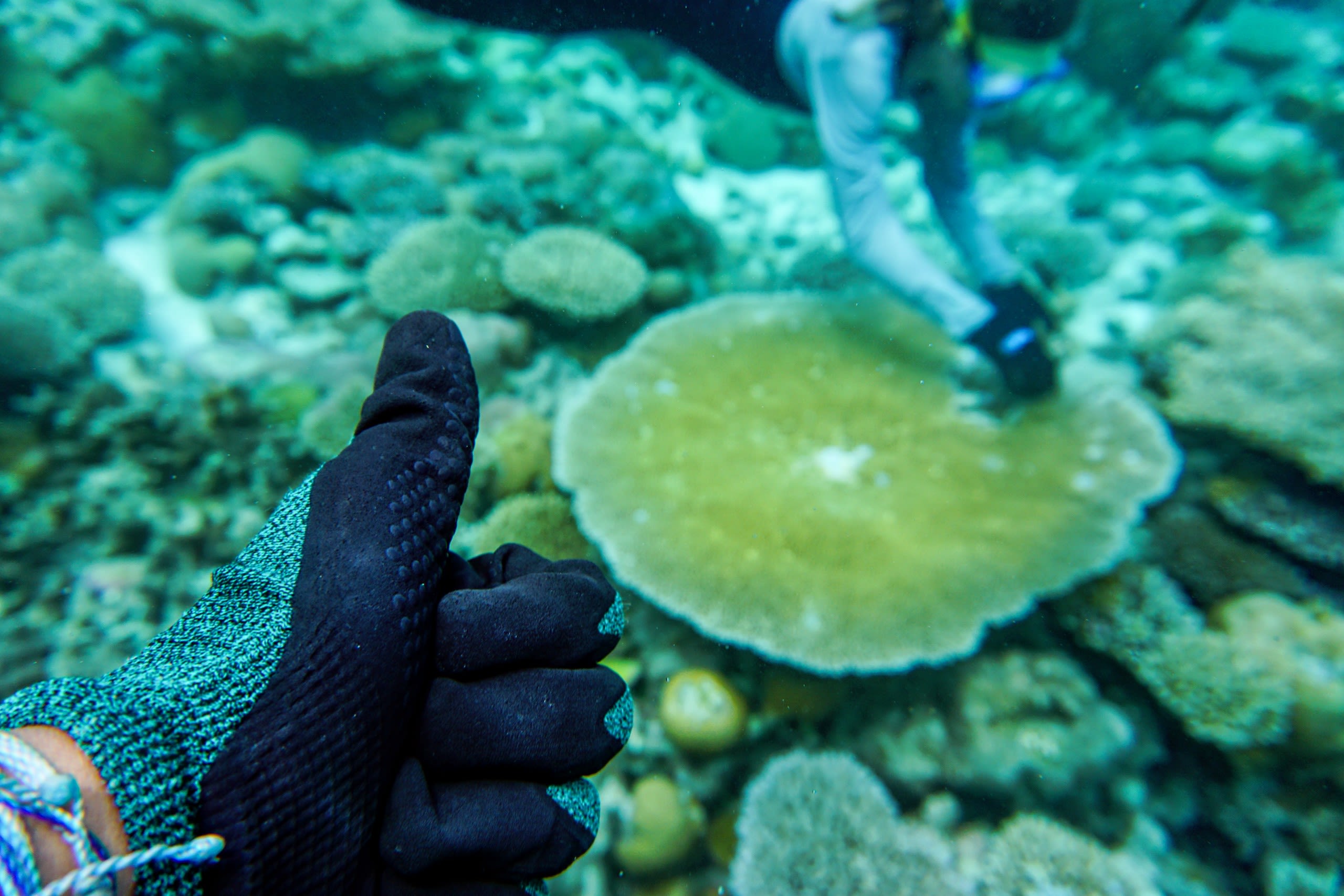
Coral sampling at site SR3 (not Birkirin Island), Majuro
Coral sampling at site SR3 (not Birkirin Island), Majuro
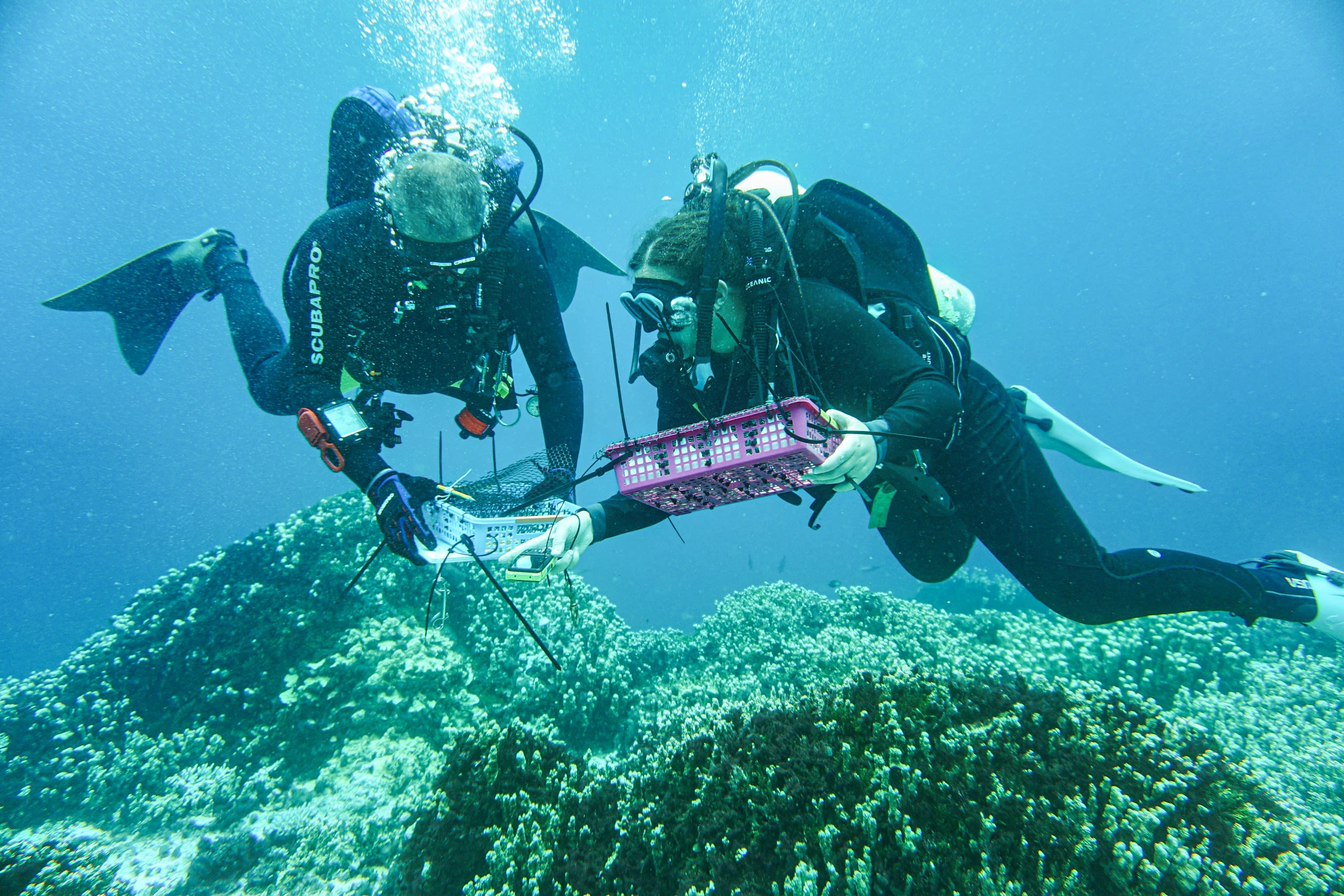
Coral sampling at site SR2, (L to R) Giorgio Ceramanna, Woods Hole Oceanographic Institution, and Tiara Stark, The Nature Conservancy, Majuro
Coral sampling at site SR2, (L to R) Giorgio Ceramanna, Woods Hole Oceanographic Institution, and Tiara Stark, The Nature Conservancy, Majuro
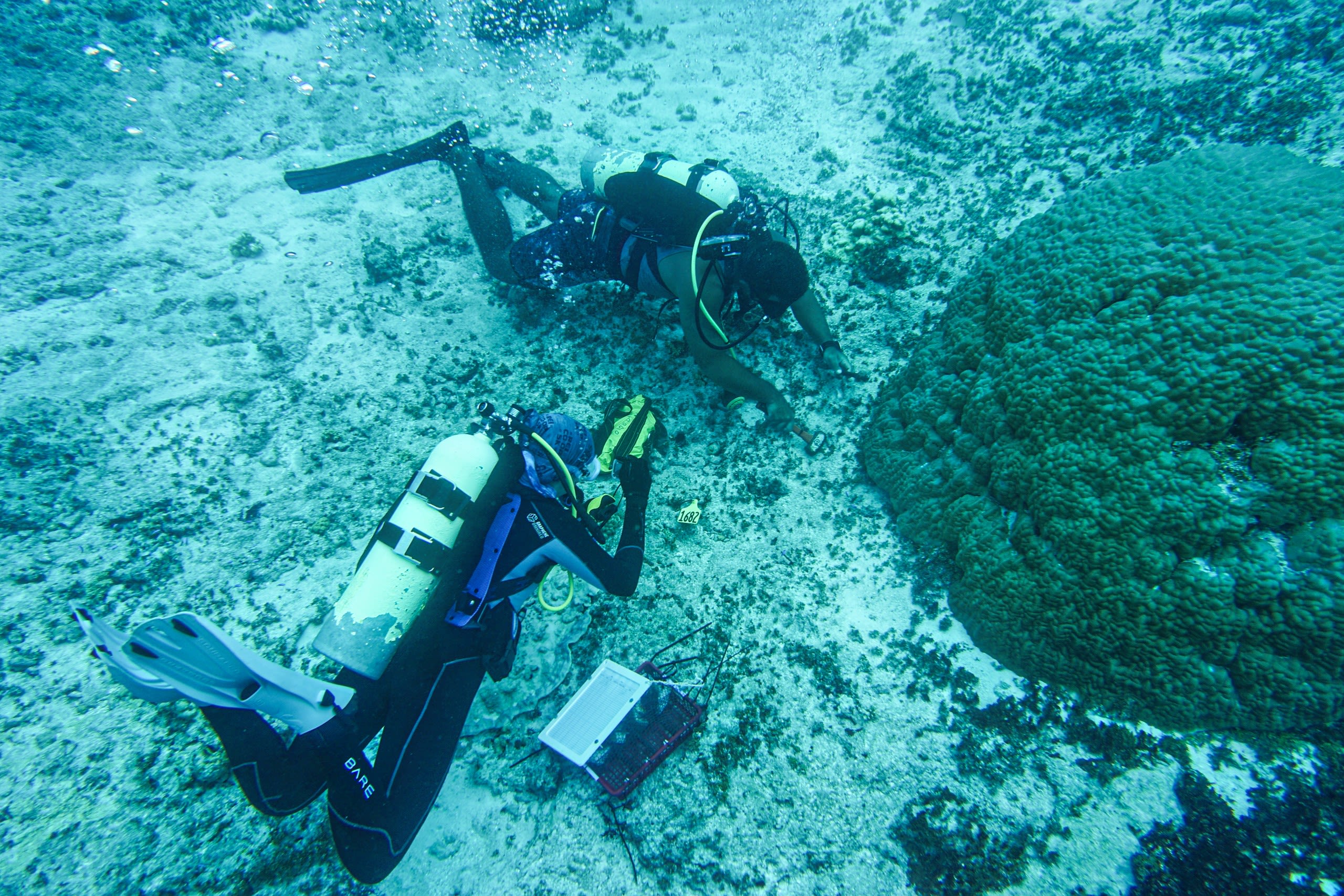
Coral sampling at site SR2, (Lower to upper) Mariya Galochkina and Evii Tong, Woods Hole Oceanographic Institute, Majuro
Coral sampling at site SR2, (Lower to upper) Mariya Galochkina and Evii Tong, Woods Hole Oceanographic Institute, Majuro
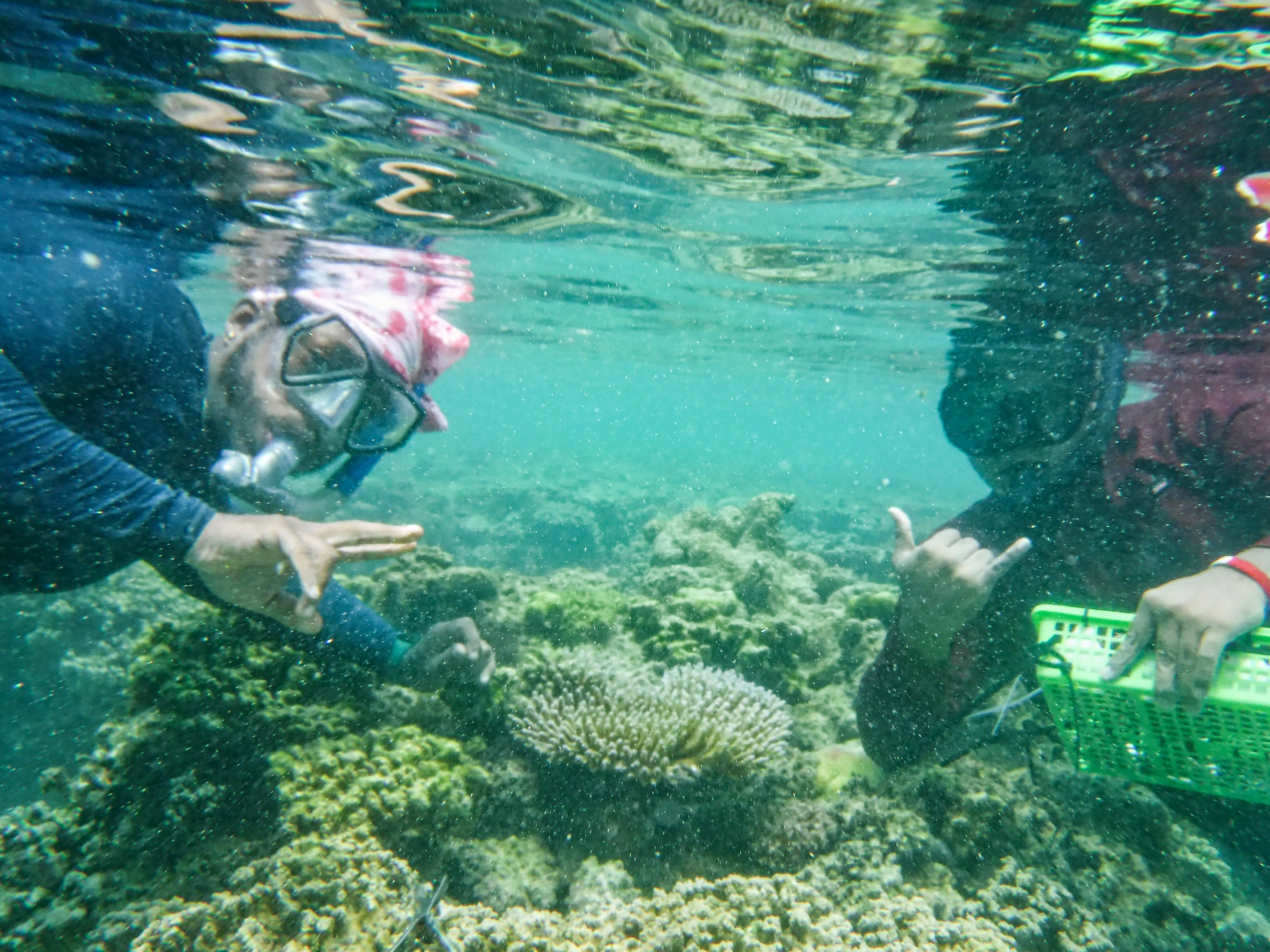
Coral sampling, (L to R) DeVante Dawson, Postdoc researcher, Palumbi Lab, Stanford University, and Dale Nabu, Public Affairs Specialist, US Embassy, Birkirin Island, Majuro
Coral sampling, (L to R) DeVante Dawson, Postdoc researcher, Palumbi Lab, Stanford University, and Dale Nabu, Public Affairs Specialist, US Embassy, Birkirin Island, Majuro
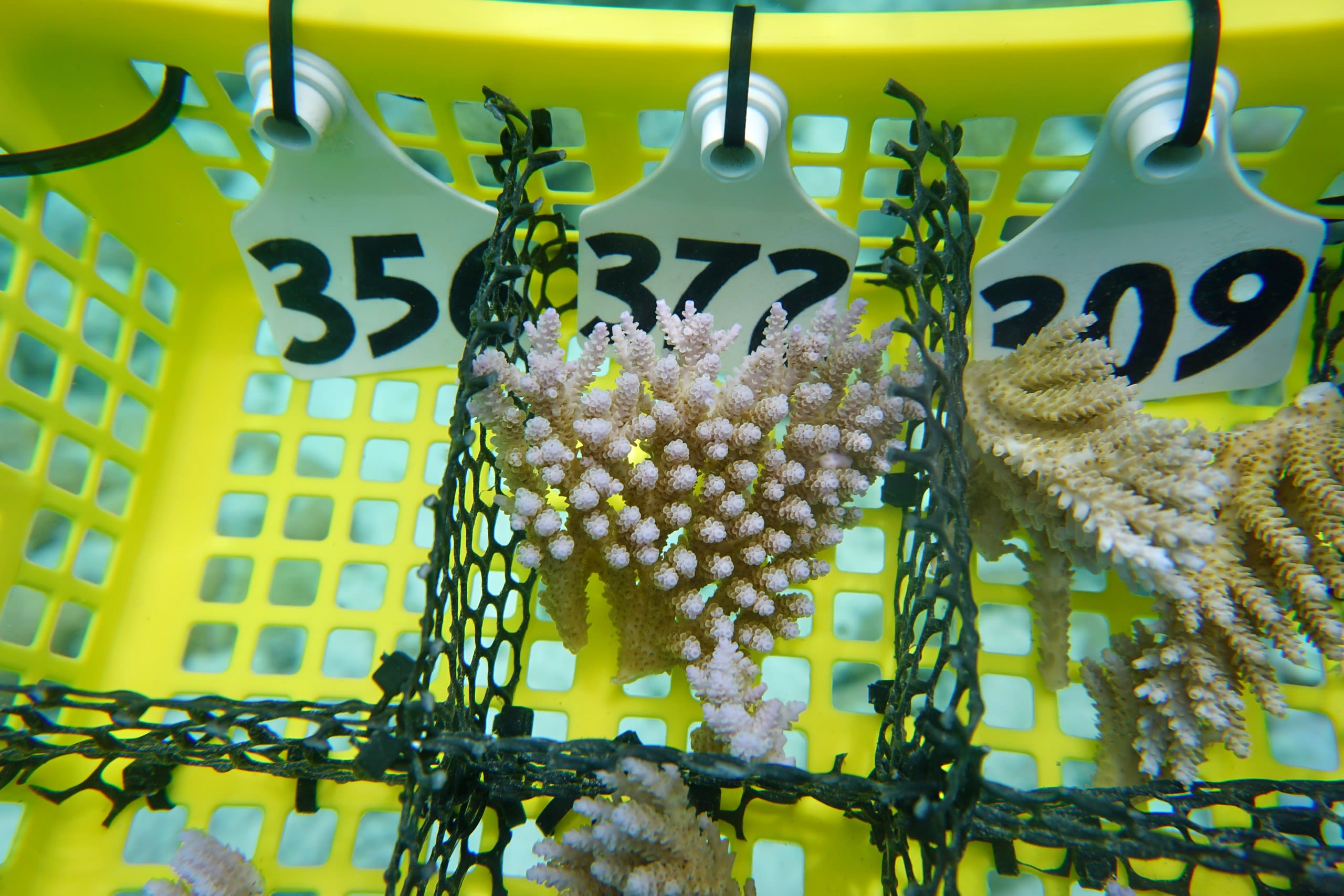
Coral samples ready for testing, Majuro
Coral samples ready for testing, Majuro
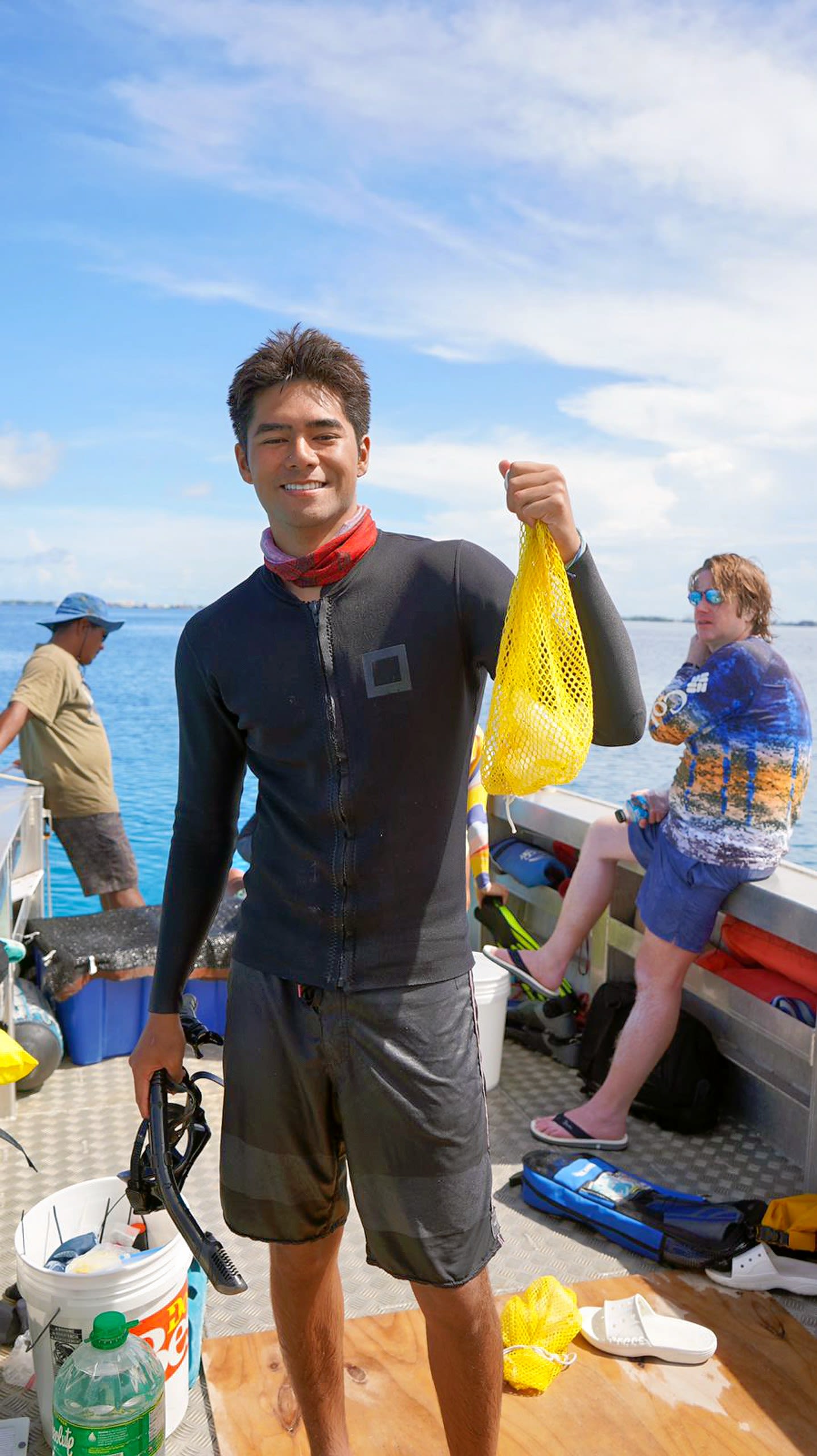
Transporting coral samples, Kaiku Kahola'a, Postdoc researcher, Palumbi Lab, Stanford University, Birkirin Island, Majuro
Transporting coral samples, Kaiku Kahola'a, Postdoc researcher, Palumbi Lab, Stanford University, Birkirin Island, Majuro
4. TESTED
We prepped the coral samples and placed them in our heat test tanks.
In the heat test tanks, we increased the water temperature to what corals would experience on a very hot day at low tide (35 deg C).
Surprisingly the corals were not affected at this temperature.
On day 2 we bumped the simulated heatwave up a degree to 36 deg C. Surprisingly the corals were not affected at this temperature either.
On day 3, at 37 degrees, some corals began bleaching, but were still the most heat resistant corals we tested across the entire atoll.
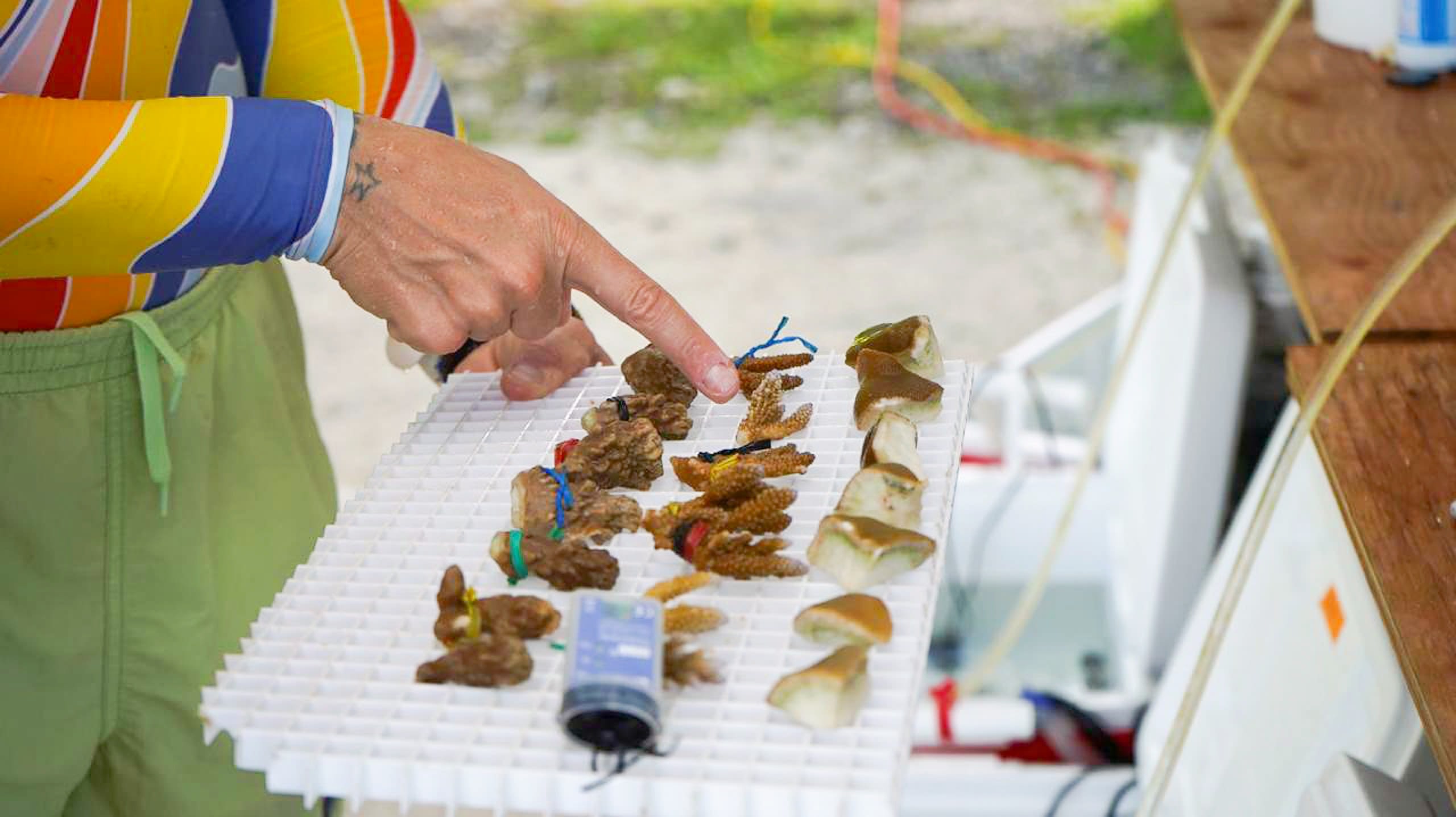
Preparing coral samples for heat testing tank, Majuro
Preparing coral samples for heat testing tank, Majuro
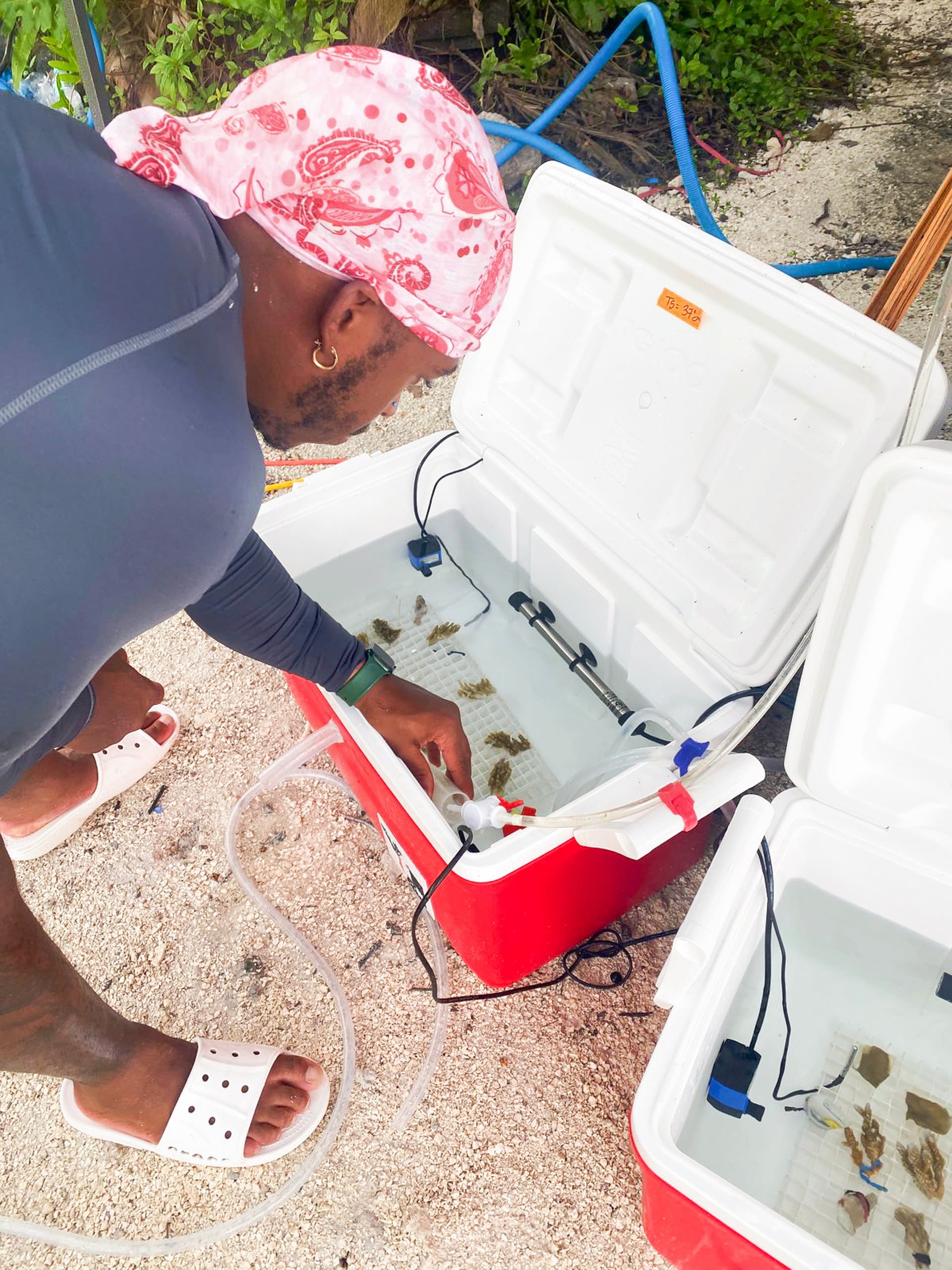
Arranging coral samples in heat testing tank, DeVante Dawson, Postdoc researcher, Palumbi Lab, Stanford University, Majuro
Arranging coral samples in heat testing tank, DeVante Dawson, Postdoc researcher, Palumbi Lab, Stanford University, Majuro
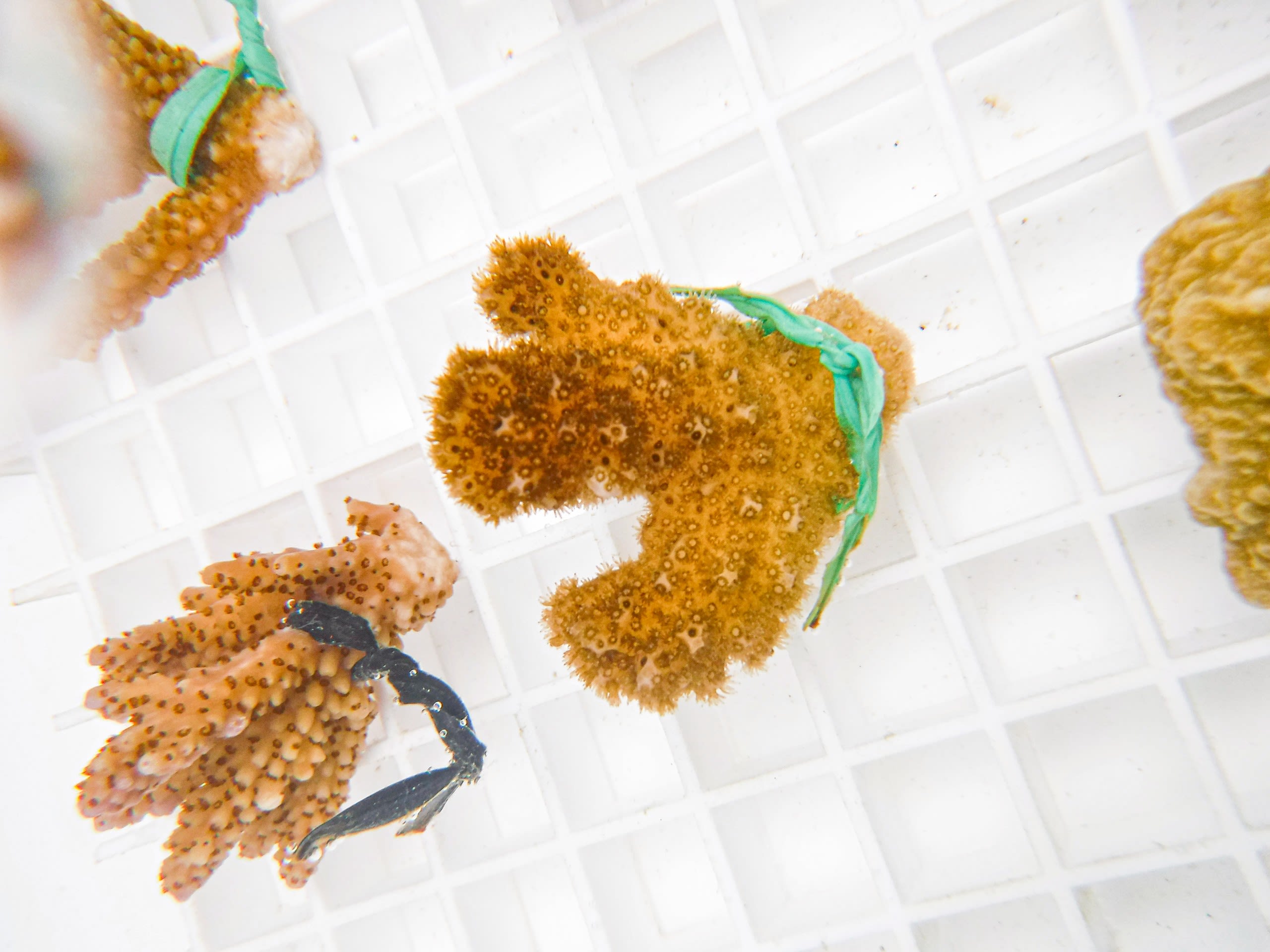
Coral samples in heat testing tank, Majuro
Coral samples in heat testing tank, Majuro
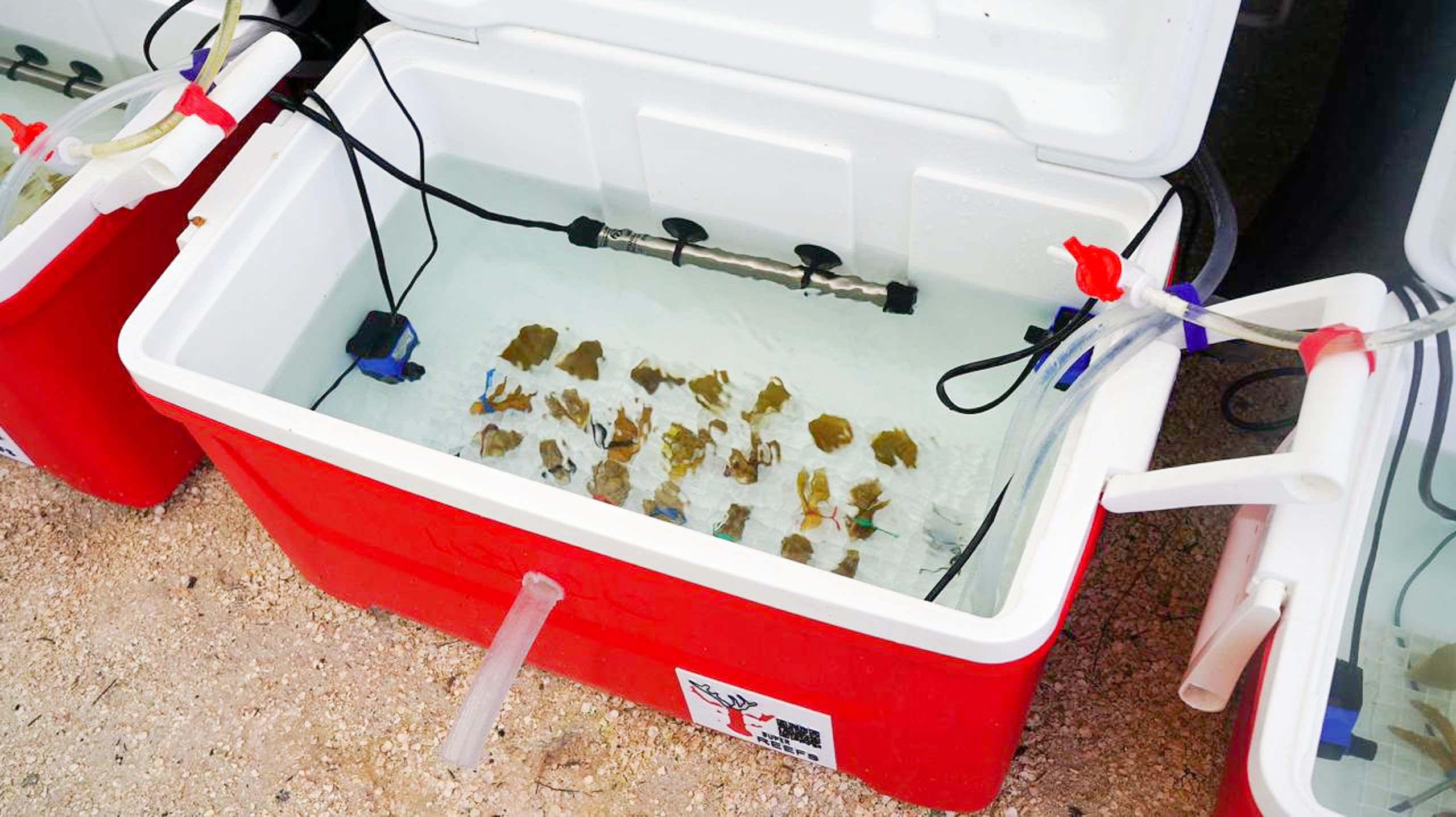
Coral samples in heat testing tank, Majuro
Coral samples in heat testing tank, Majuro
5. TEST RESULTS
As an example, the photo below shows four colonies of A. digitifera (C1, C2, C3, C4) in two different tanks at 37 deg (F2 and F3) and two at normal reef temperature of 30 deg C (F1 and F4).
All the heated branches are lighter than branches at 30 deg, especially C4, which are completely bleached. These corals were sampled from site SR3 in the NW corner of the atoll.
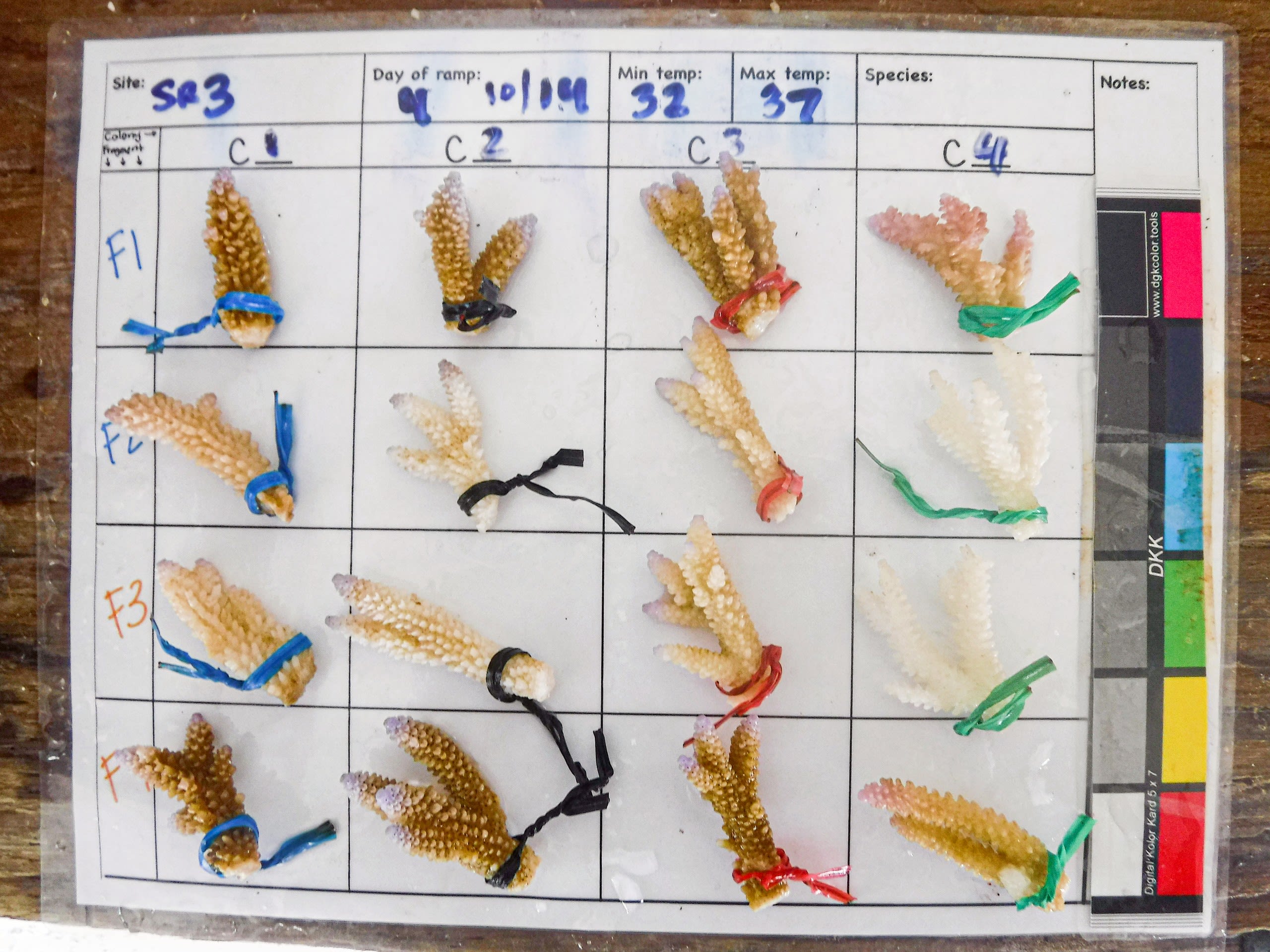
Test SR3 shows heavy bleaching as temperatures increased. These corals sampled from NW corner of Majuro Atoll (not from Birkirin Island), Majuro
Test SR3 shows heavy bleaching as temperatures increased. These corals sampled from NW corner of Majuro Atoll (not from Birkirin Island), Majuro
The second picture is the same experiment but done on Birkirin Island corals - and here none of the heated corals got paler. None of them bleached.
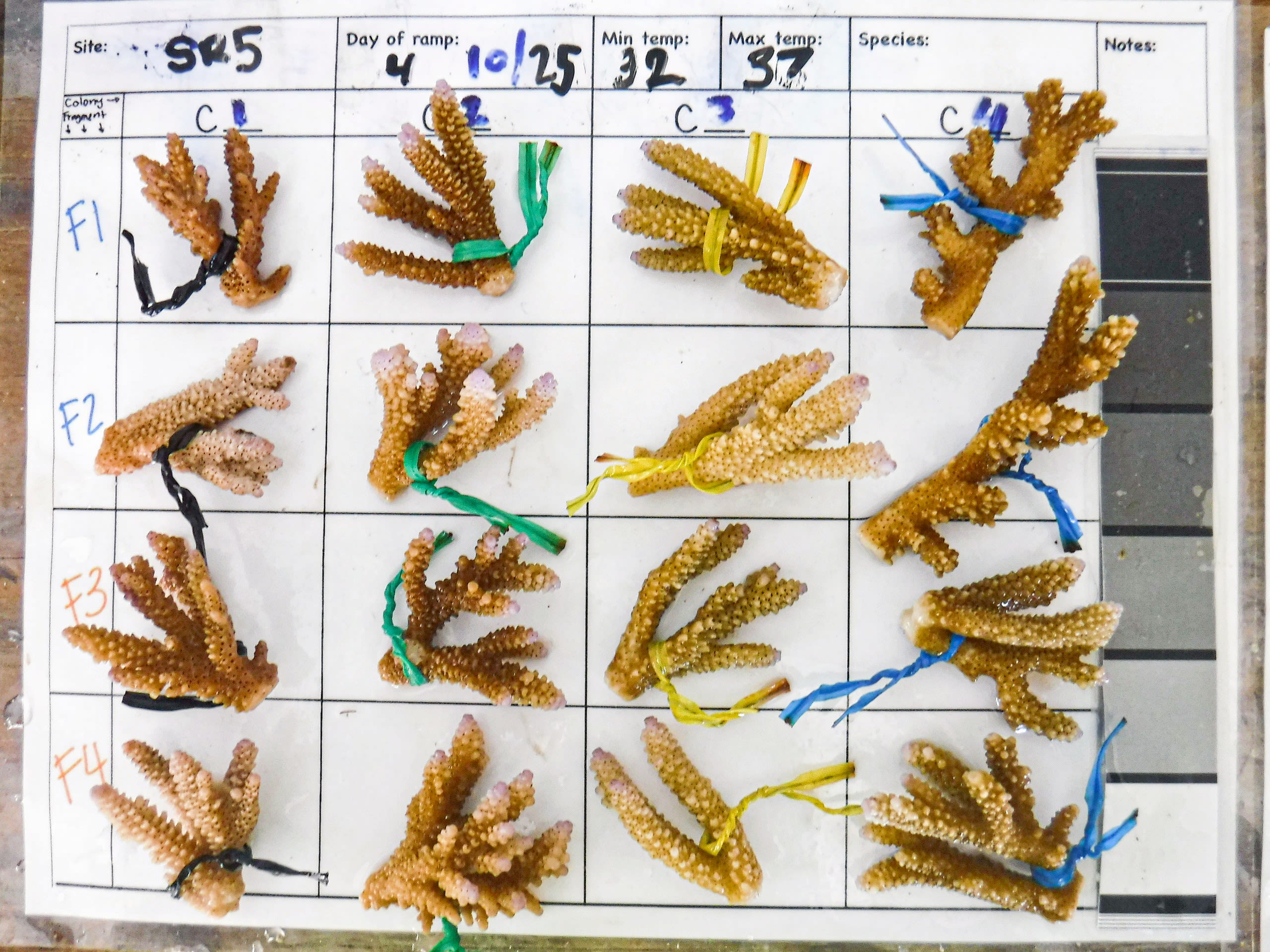
SR5 shows strong resiliency despite increased temperatures. These corals sampled from Birkirin Island, Majuro
SR5 shows strong resiliency despite increased temperatures. These corals sampled from Birkirin Island, Majuro
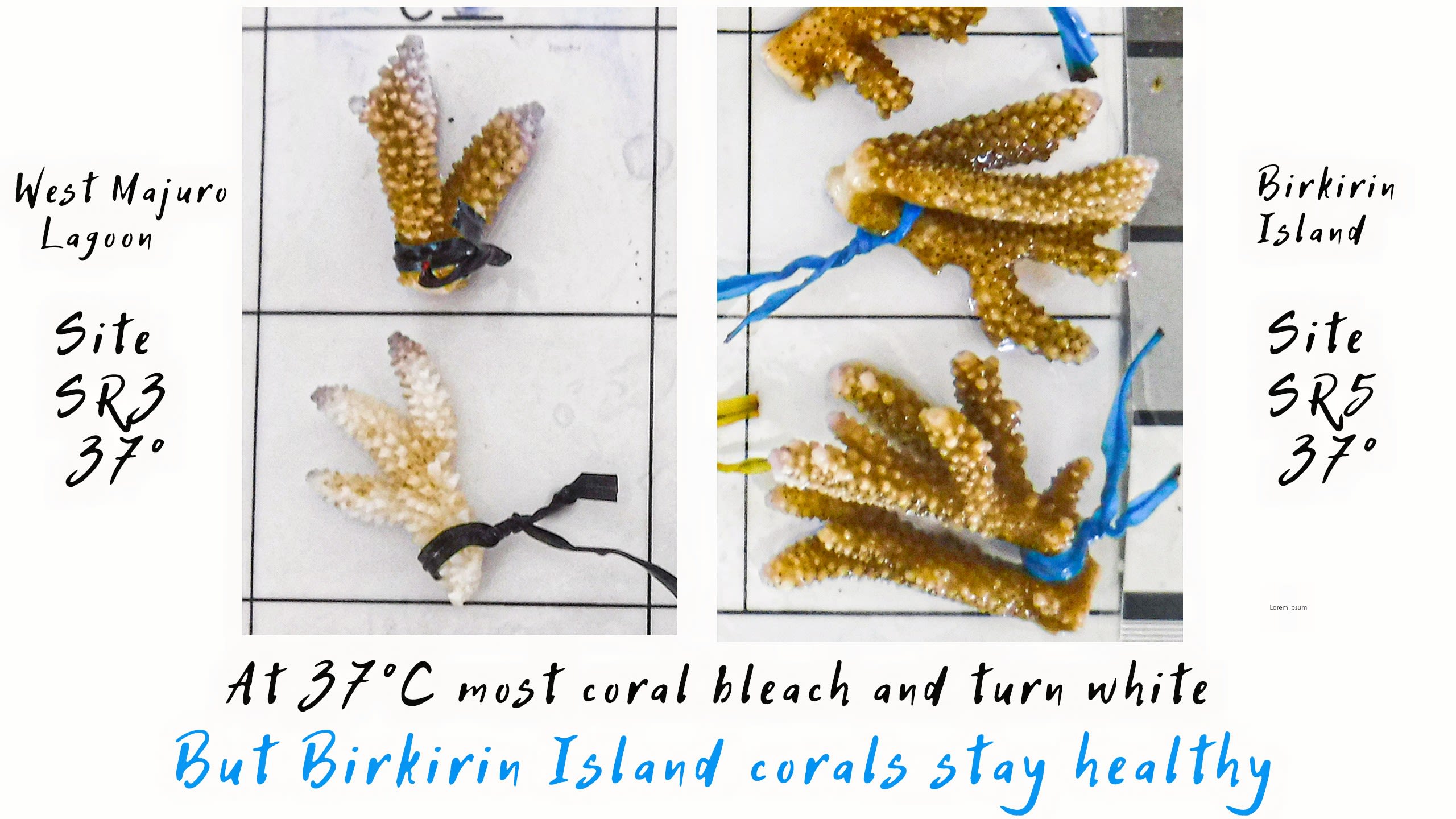
Test results
Test results
6. TRANSPLANT
As part of our conversations with the family, they gave us permission to show them a simple way to transplant heat resistant corals. With their help along with some simple tools and supplies, we built coral test nurseries to accommodate this research.
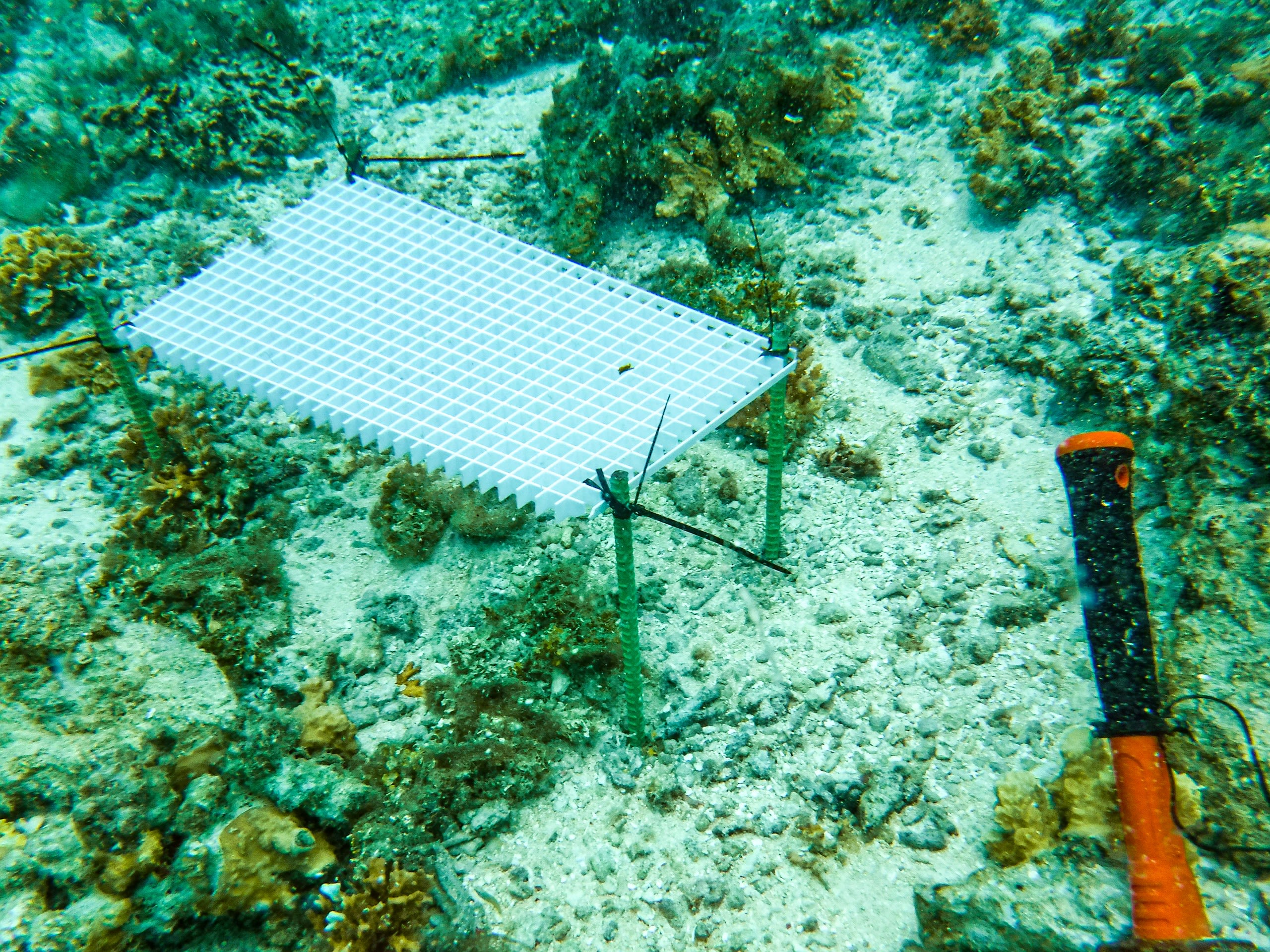
Setting up coral test nursery, Birkirin Island, Majuro
Setting up coral test nursery, Birkirin Island, Majuro
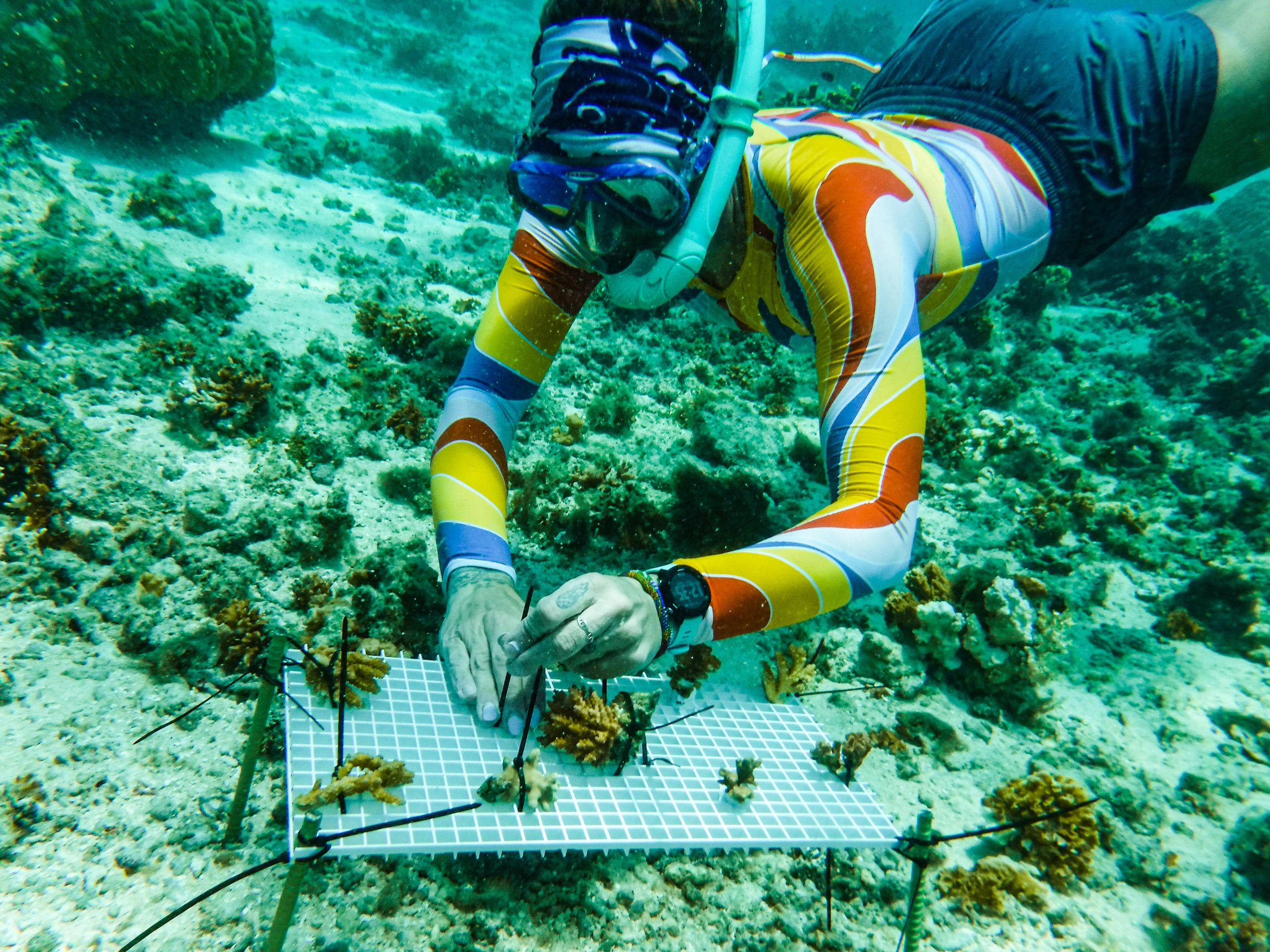
Transplanting samples to coral test nursery, Courtney Klepac, Postdoc researcher, Palumbi Lab, Stanford University, Birkirin Island, Majuro
Transplanting samples to coral test nursery, Courtney Klepac, Postdoc researcher, Palumbi Lab, Stanford University, Birkirin Island, Majuro
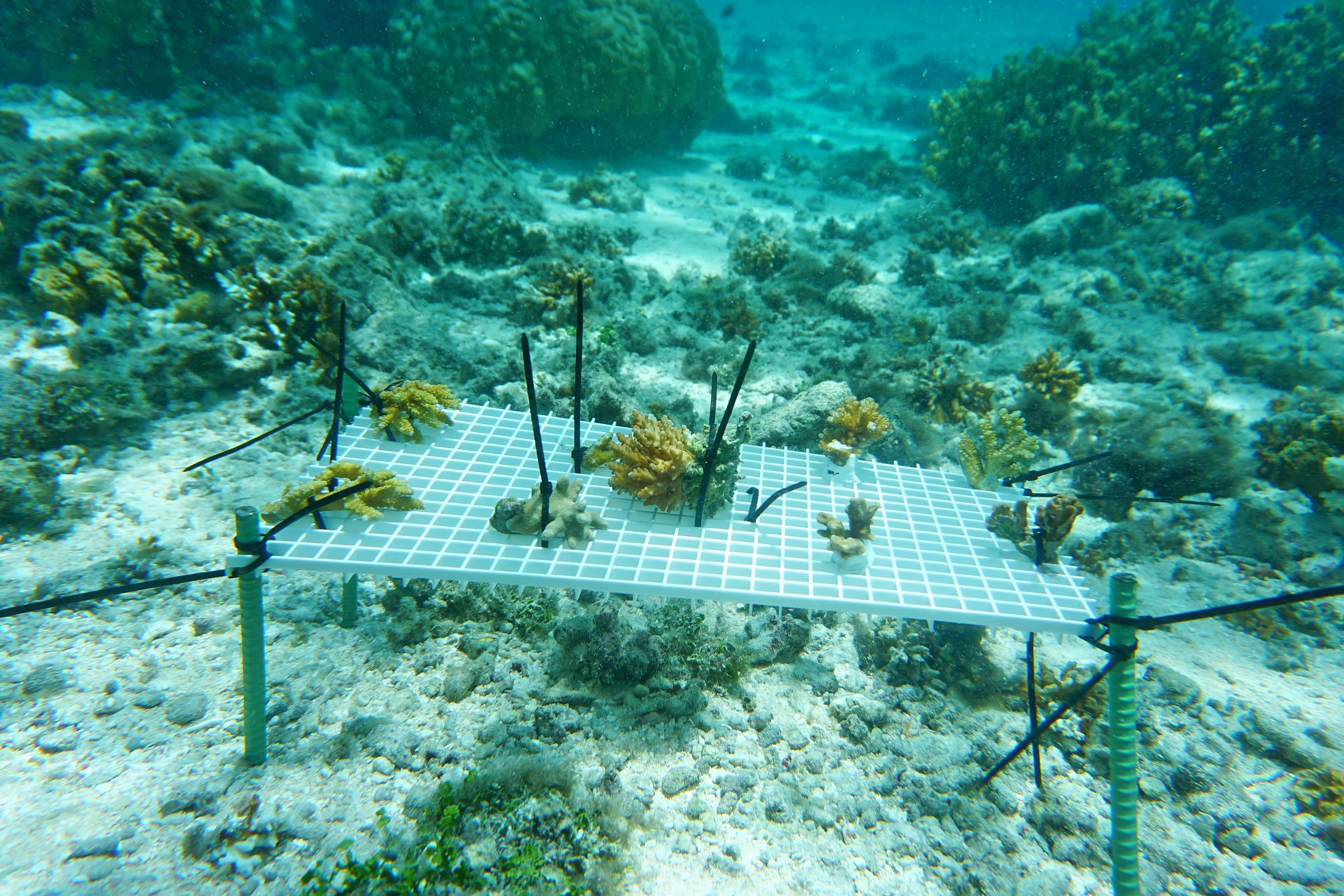
Transplanted samples to coral test nursery, Birkirin Island, Majuro
Transplanted samples to coral test nursery, Birkirin Island, Majuro
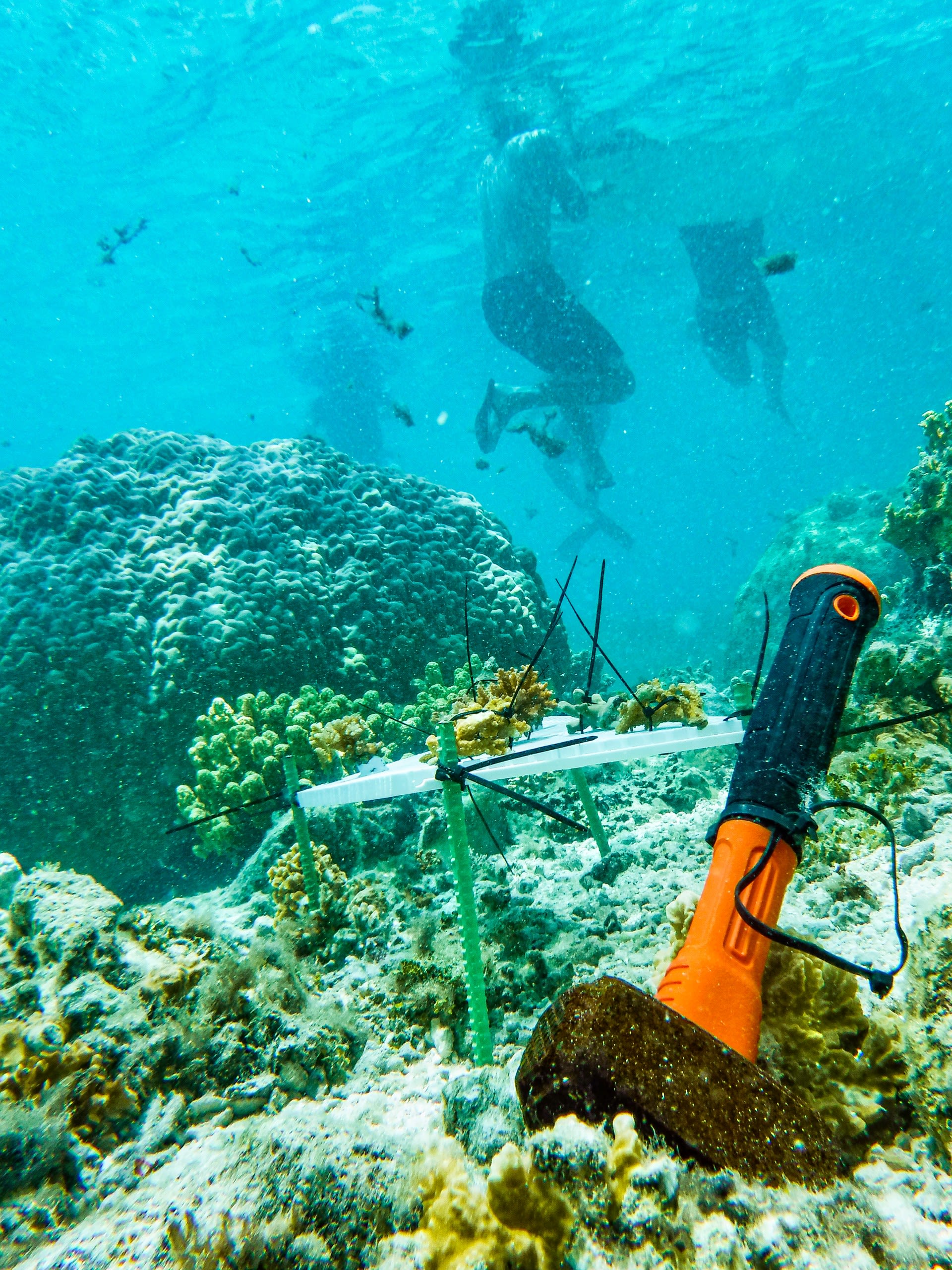
Transplanted samples to coral test nursery, Birkirin Island, Majuro
Transplanted samples to coral test nursery, Birkirin Island, Majuro
7. REPORTING
We presented test results to the family, showing them how the Birkirin Island corals as well as other atoll coral reacted to the heat tank experiments.
We also shared the test results with other Majuro groups on how varying water temperatures on coral from different locations impacted coral bleaching.
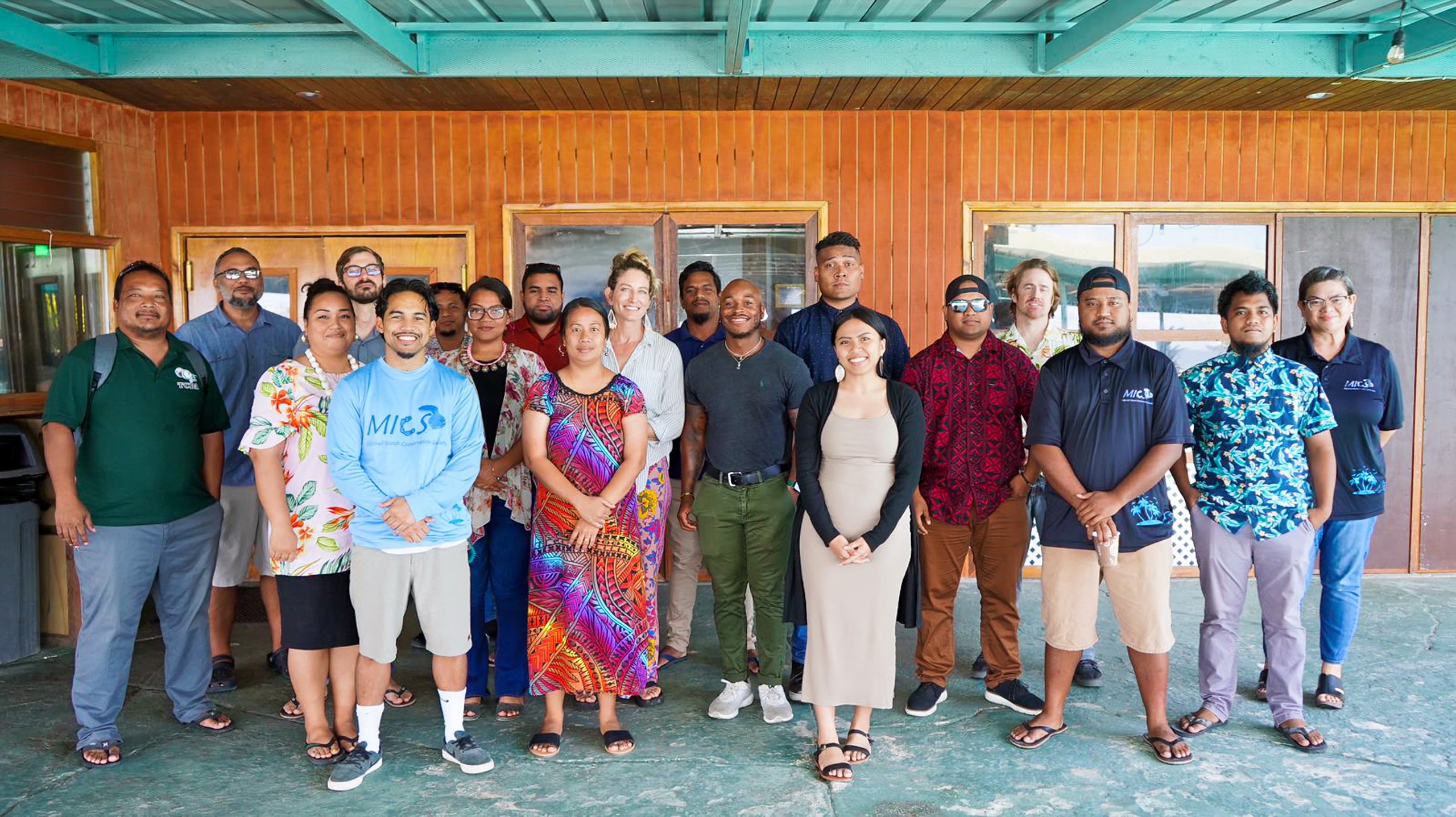
Participants in Super Reefs meeting, Majuro
Participants in Super Reefs meeting, Majuro
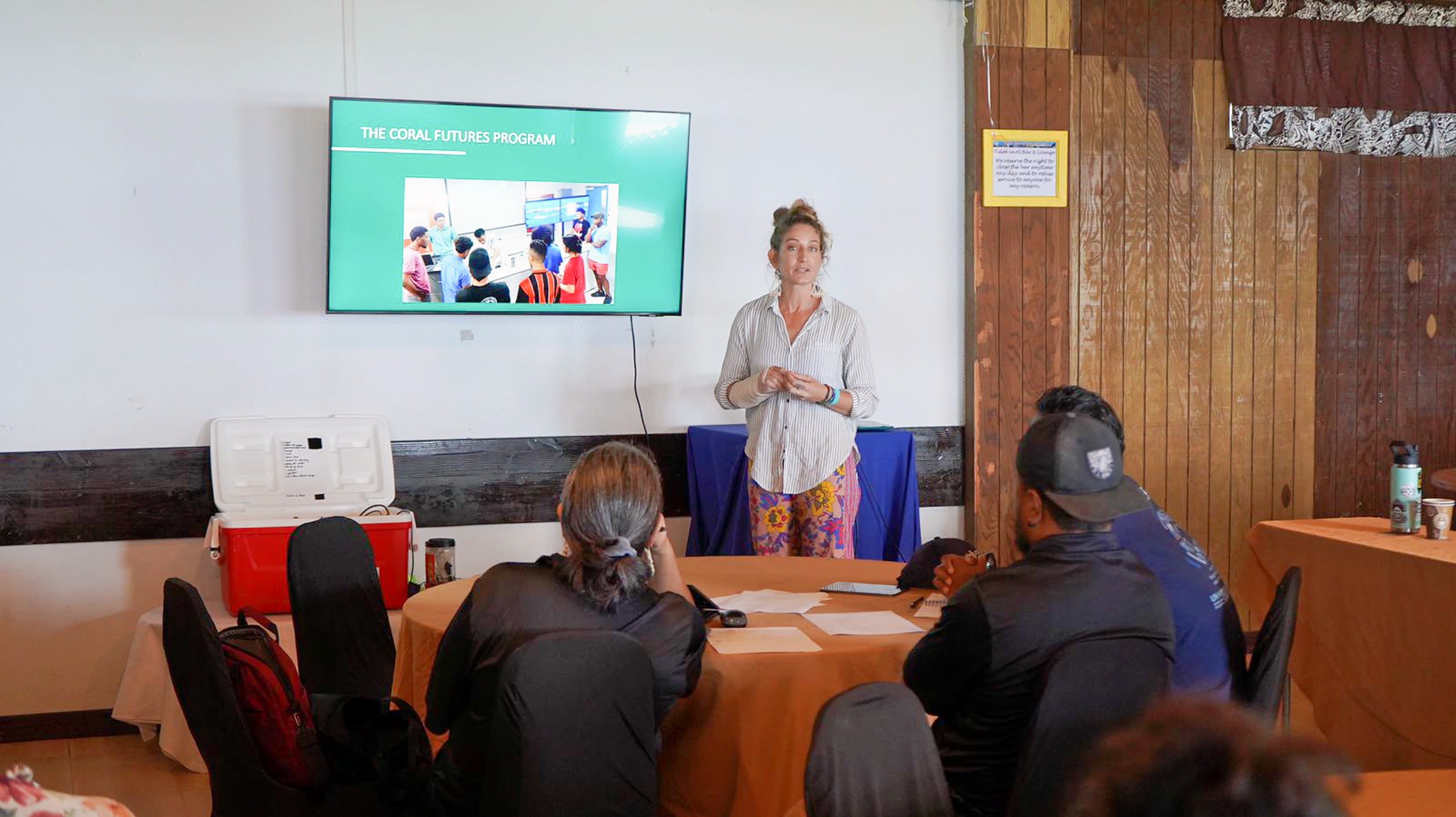
Reporting coral test results, Super Reefs meeting, Courtney Klepac, Postdoc researcher, Palumbi Labs, Stanford University, Majuro
Reporting coral test results, Super Reefs meeting, Courtney Klepac, Postdoc researcher, Palumbi Labs, Stanford University, Majuro
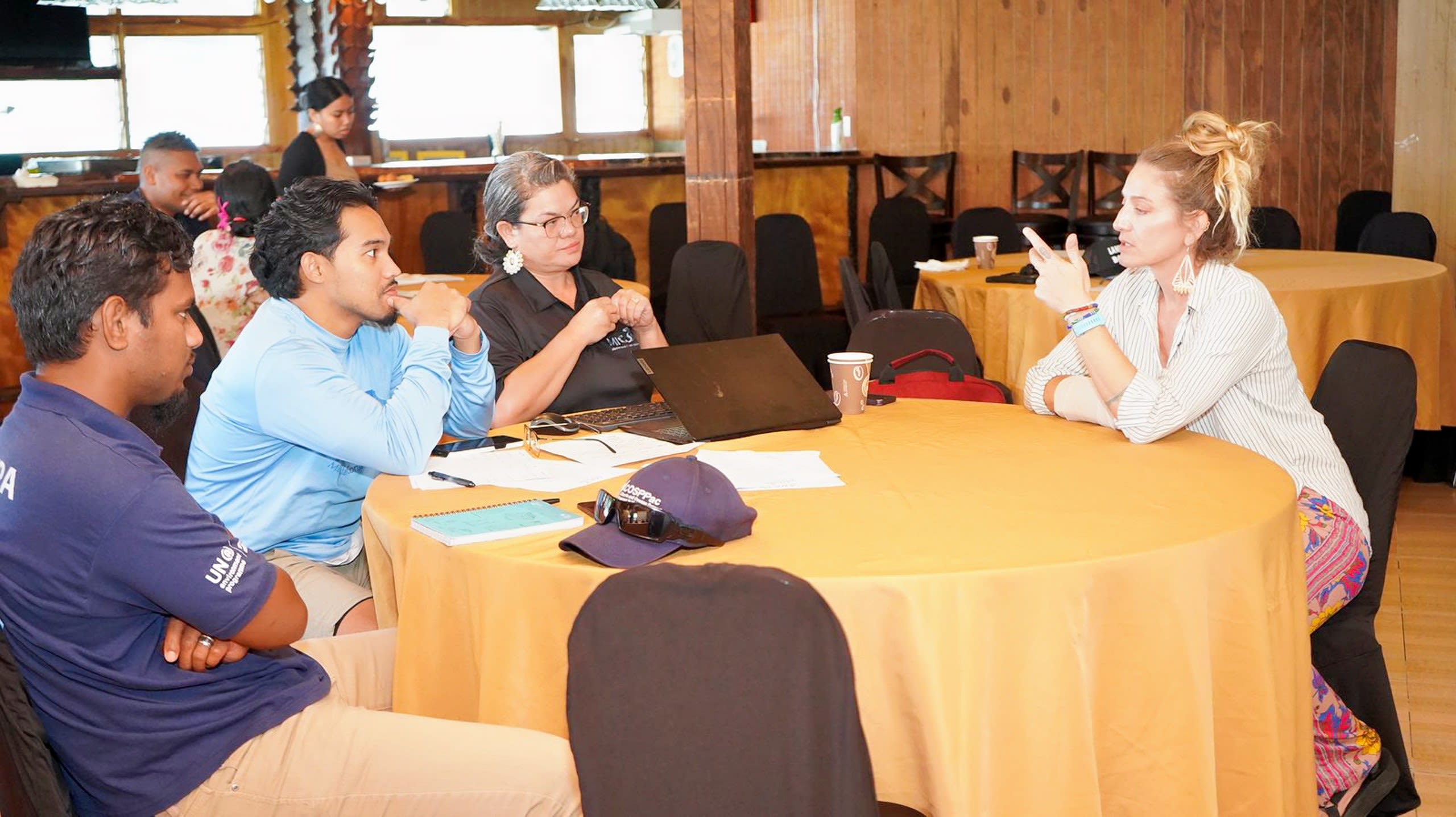
Participants discussing coral test results, Super Reef meeting, Majuro
Participants discussing coral test results, Super Reef meeting, Majuro
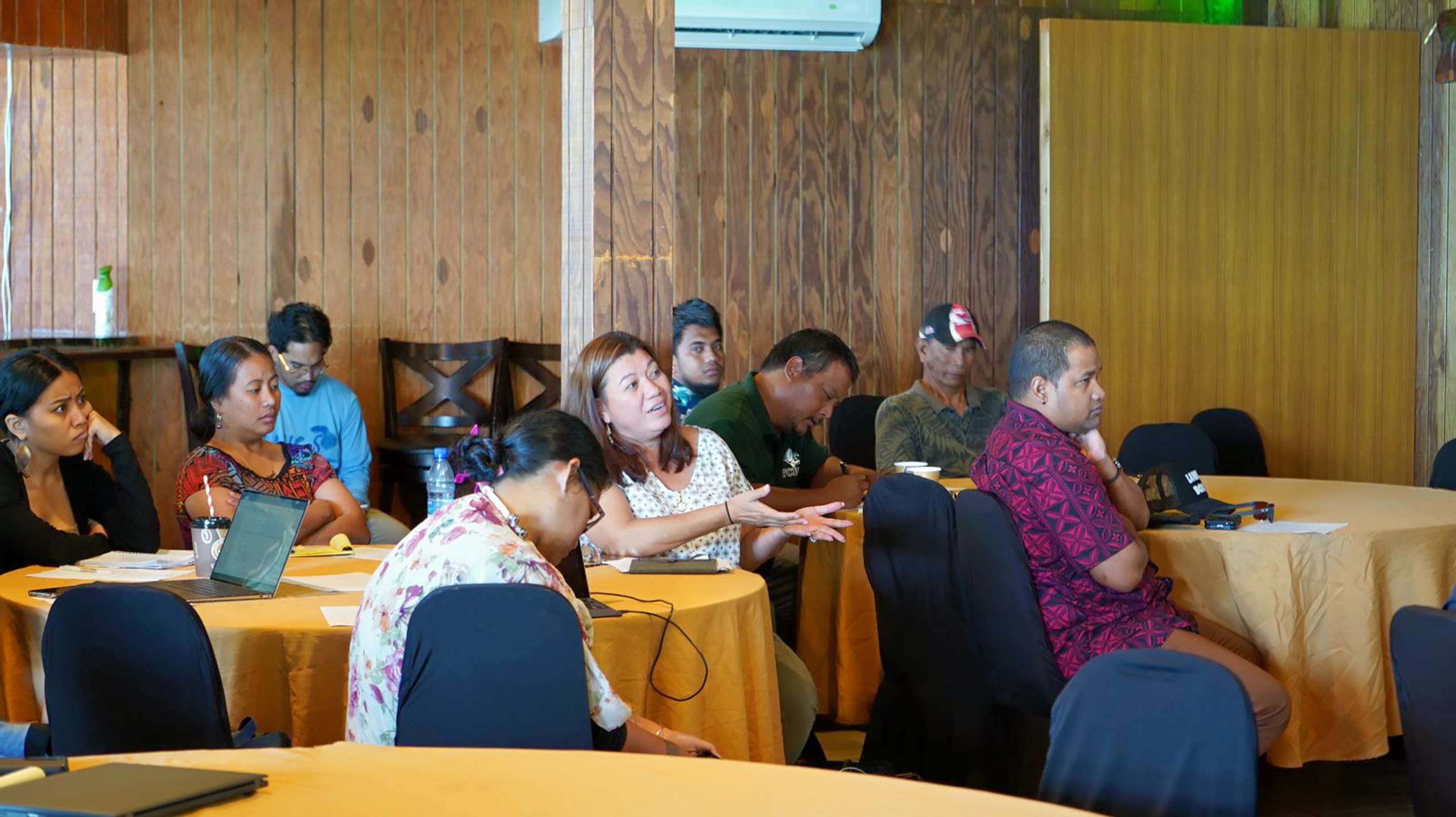
Participants discussing coral test results, Super Reef meeting, Majuro
Participants discussing coral test results, Super Reef meeting, Majuro
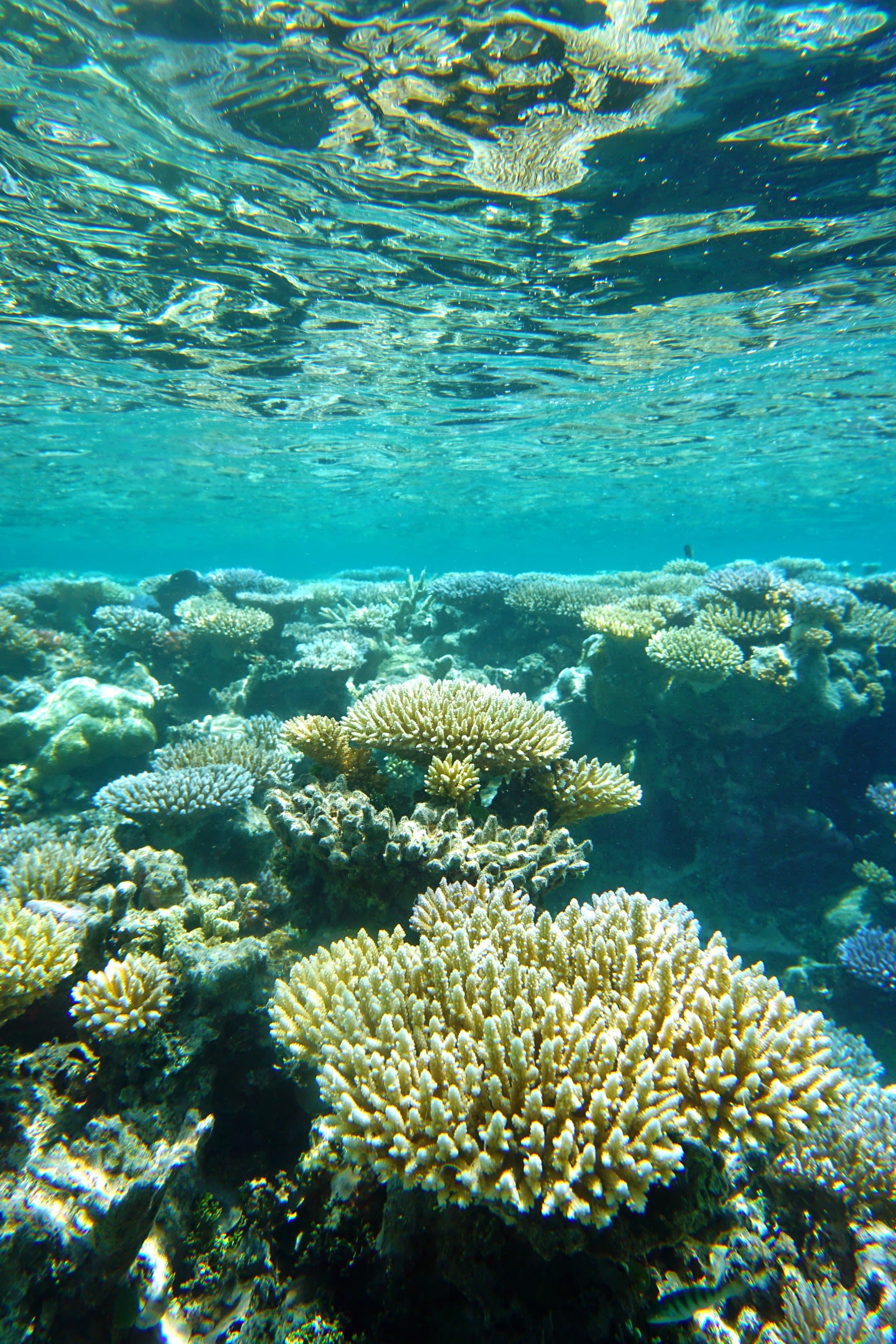
Coral garden (healthy), Majuro
Coral garden (healthy), Majuro
8. PROTECTING
While not able to directly protect against climate change, the family has protected Birkirin Island corals from pollution, over-fishing, and reef damage. Their actions helped sustain a strong and healthy reef.
Our results may help the family see ahead - to understand that their protected corals do have a future. And that the continued protection has a future.
9. MPA
The family is currently deliberating the protected status of Birkirin Island. There are many reasons for their commitment to this island and its future.
We hope our tests and analysis assist in their decisions.
Caye Caulker and Turneffe Atoll, Belize

Belize sits at the southern end of the Meso-American coral reef, among a long line of coral atolls, islands and barrier reefs.
It is home to some of the most protected reefs in the Caribbean, and is looking to increase the coral area it protects.
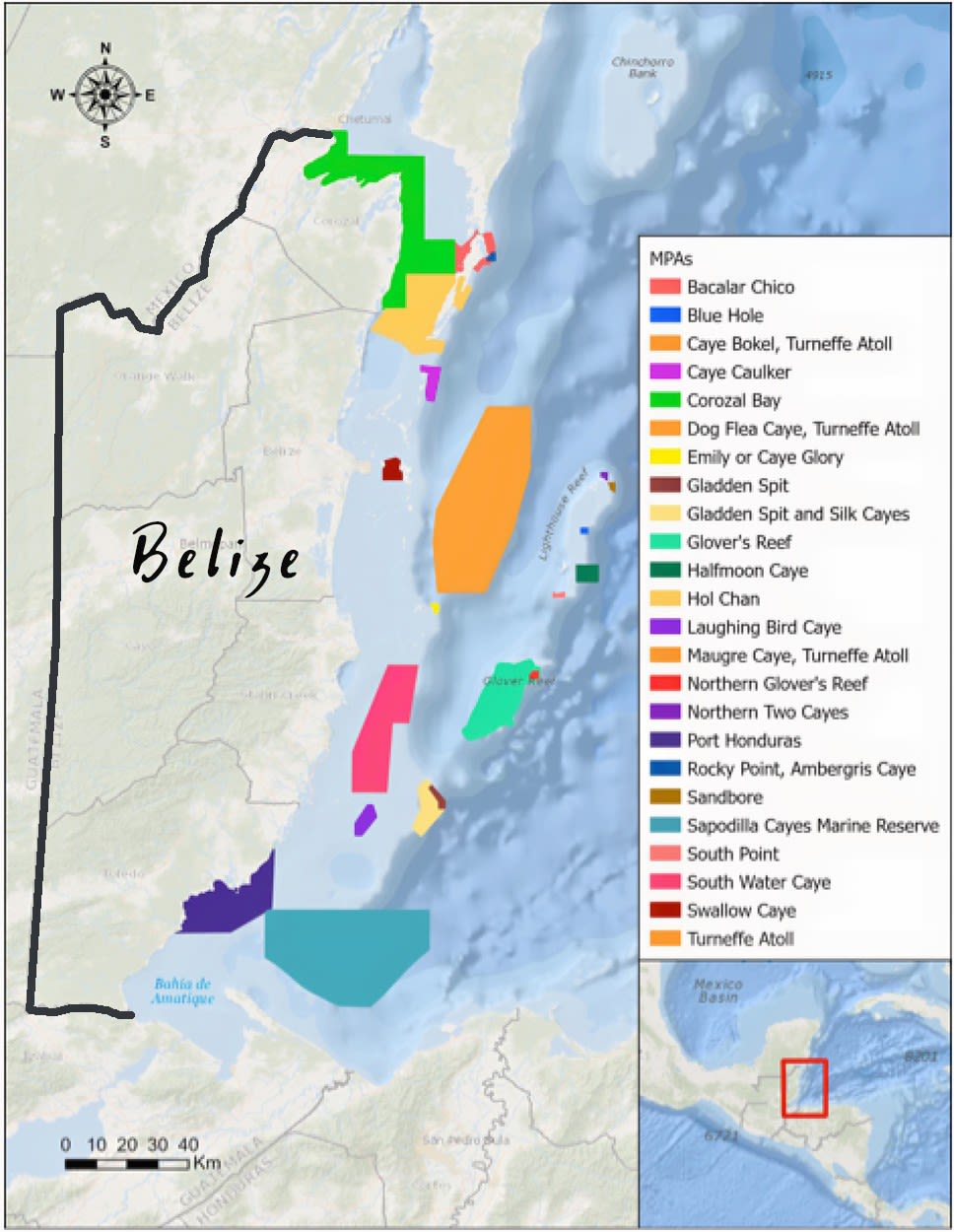
Marine Protected Areas (MPAs), Belize
Marine Protected Areas (MPAs), Belize
Our project is to help the Belize conservation effort by testing if different areas proposed for protection have corals that are resistant to future heatwaves.
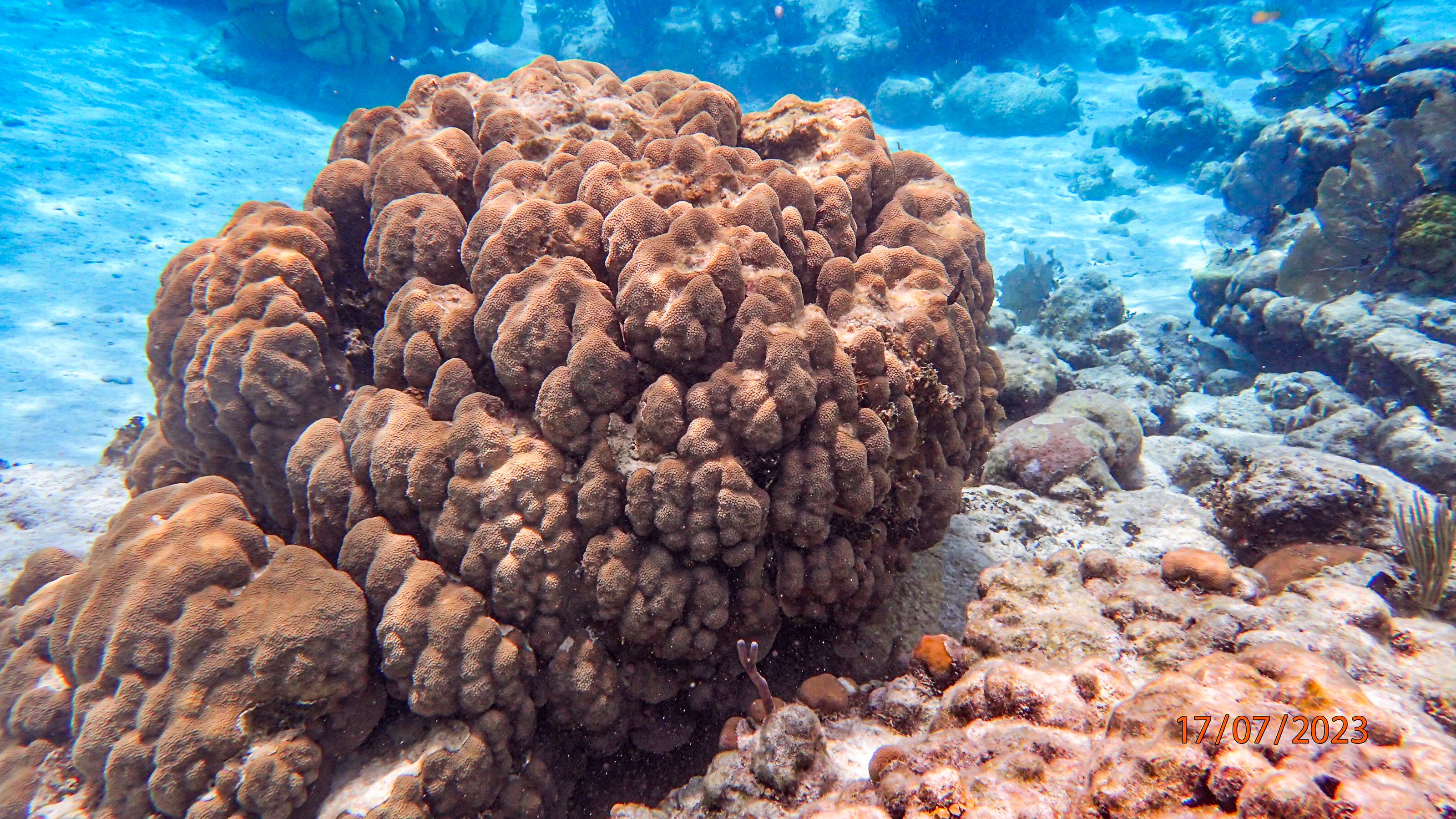
Montastrea coral (healthy), Belize
Montastrea coral (healthy), Belize
Like much of the Caribbean, summer waters are hot and getting much hotter in Belize. When we were there in June 2023, temperatures were climbing and corals were already bleaching at Caye Caulker.
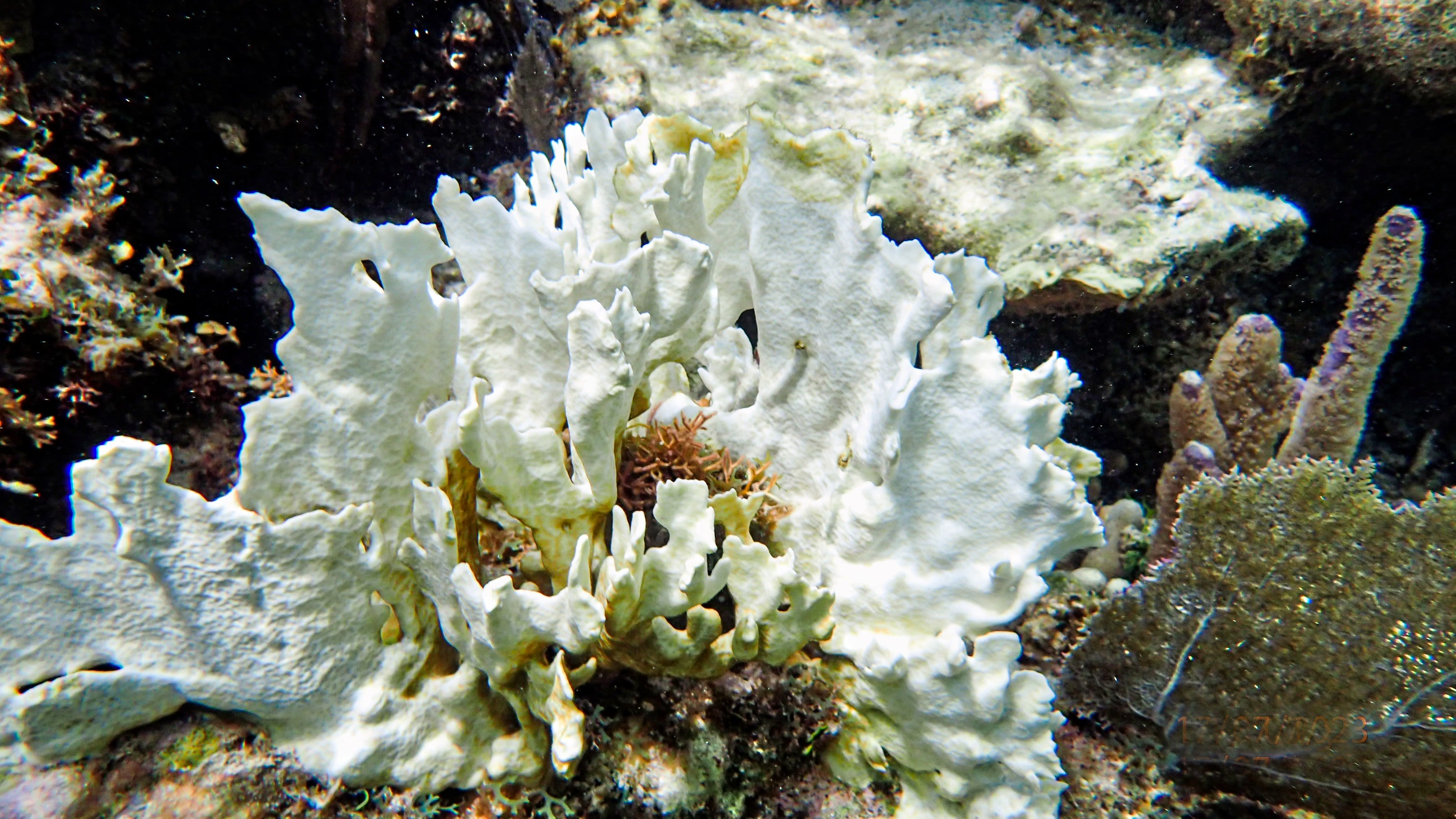
Fire coral (bleached), Caye Caulker, Belize
Fire coral (bleached), Caye Caulker, Belize
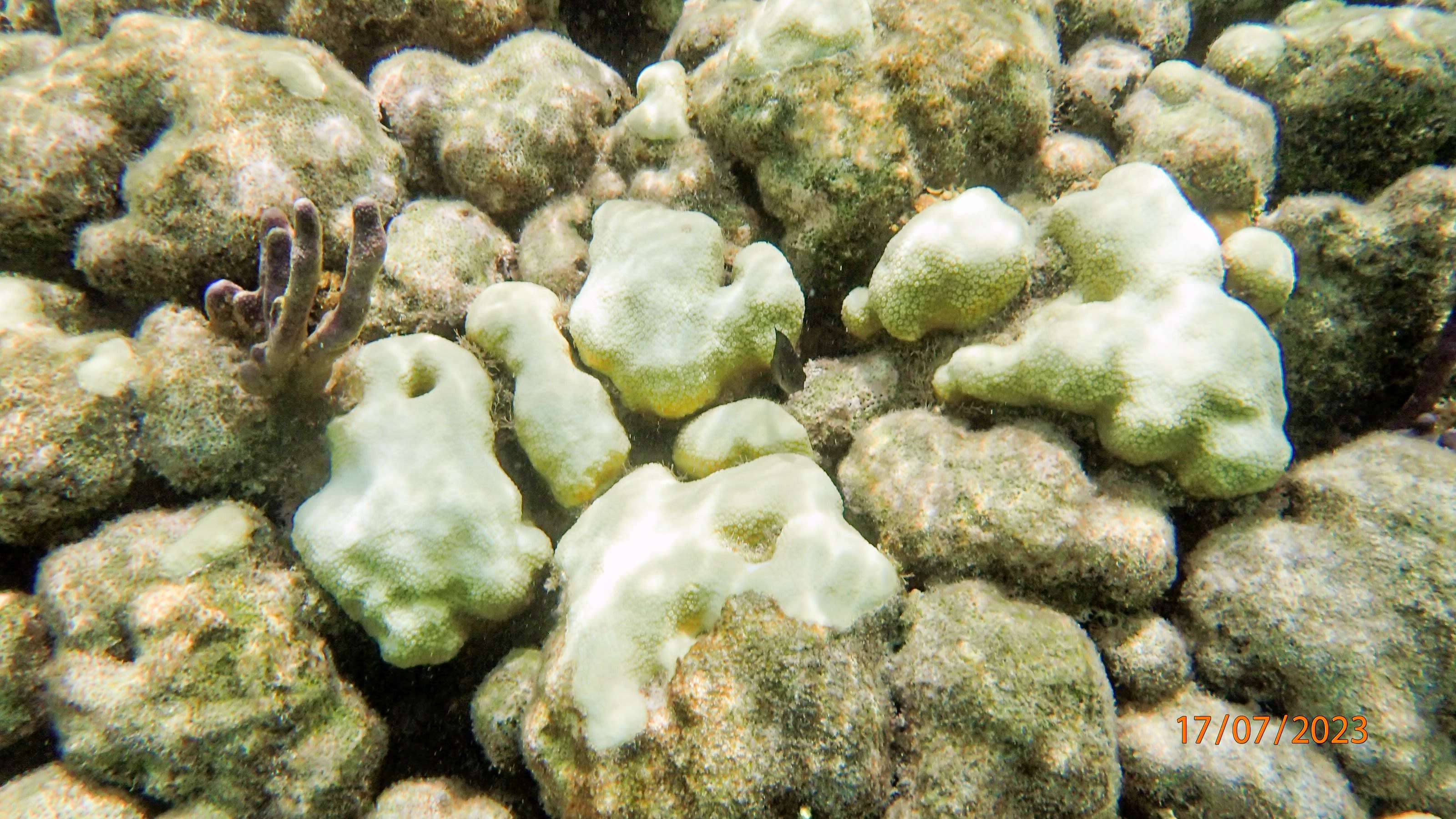
Montastrea coral (bleached), Caye Caulker, Belize
Montastrea coral (bleached), Caye Caulker, Belize
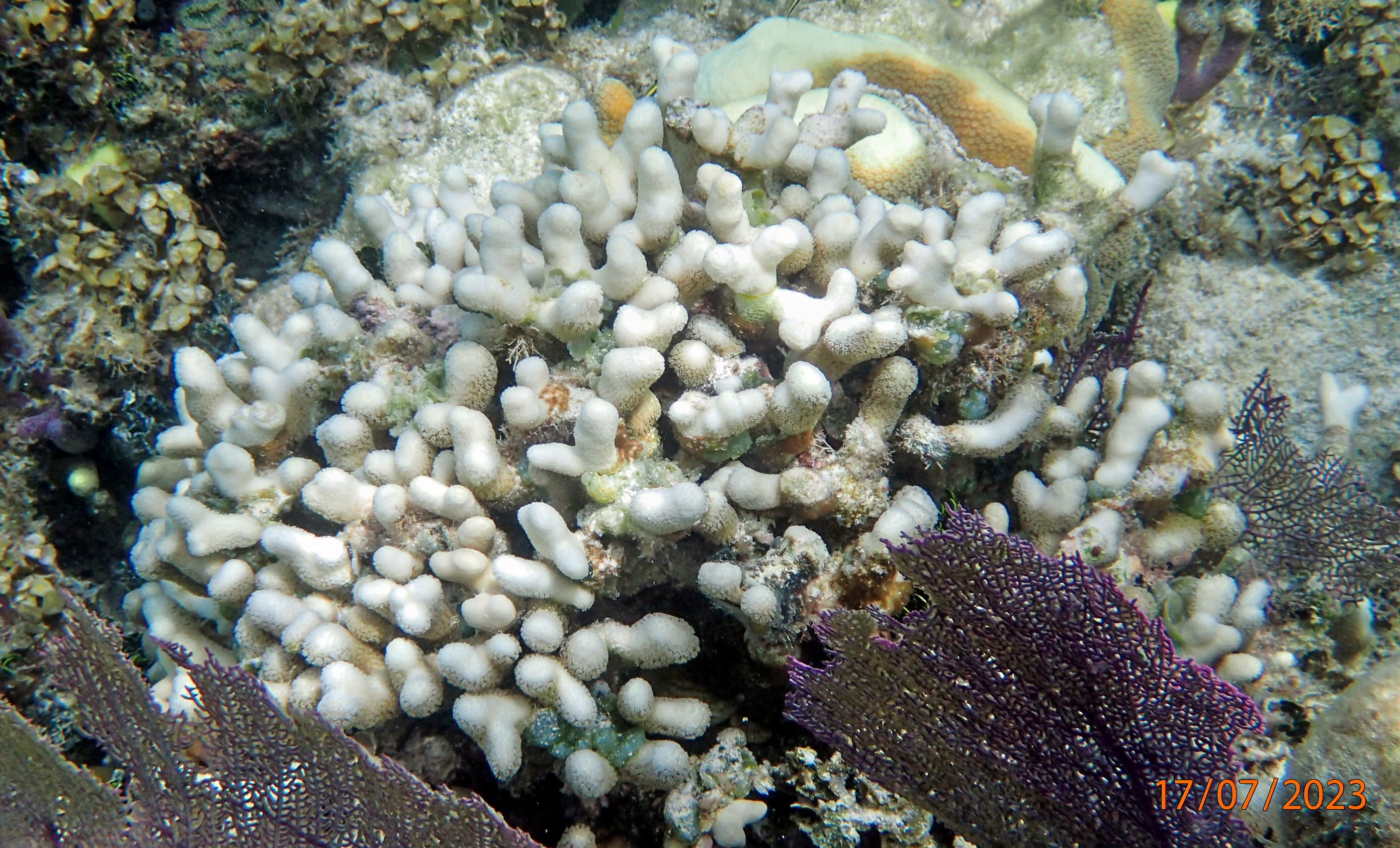
Finger coral (bleached), Caye Caulker, Belize
Finger coral (bleached), Caye Caulker, BelizeFinger coral
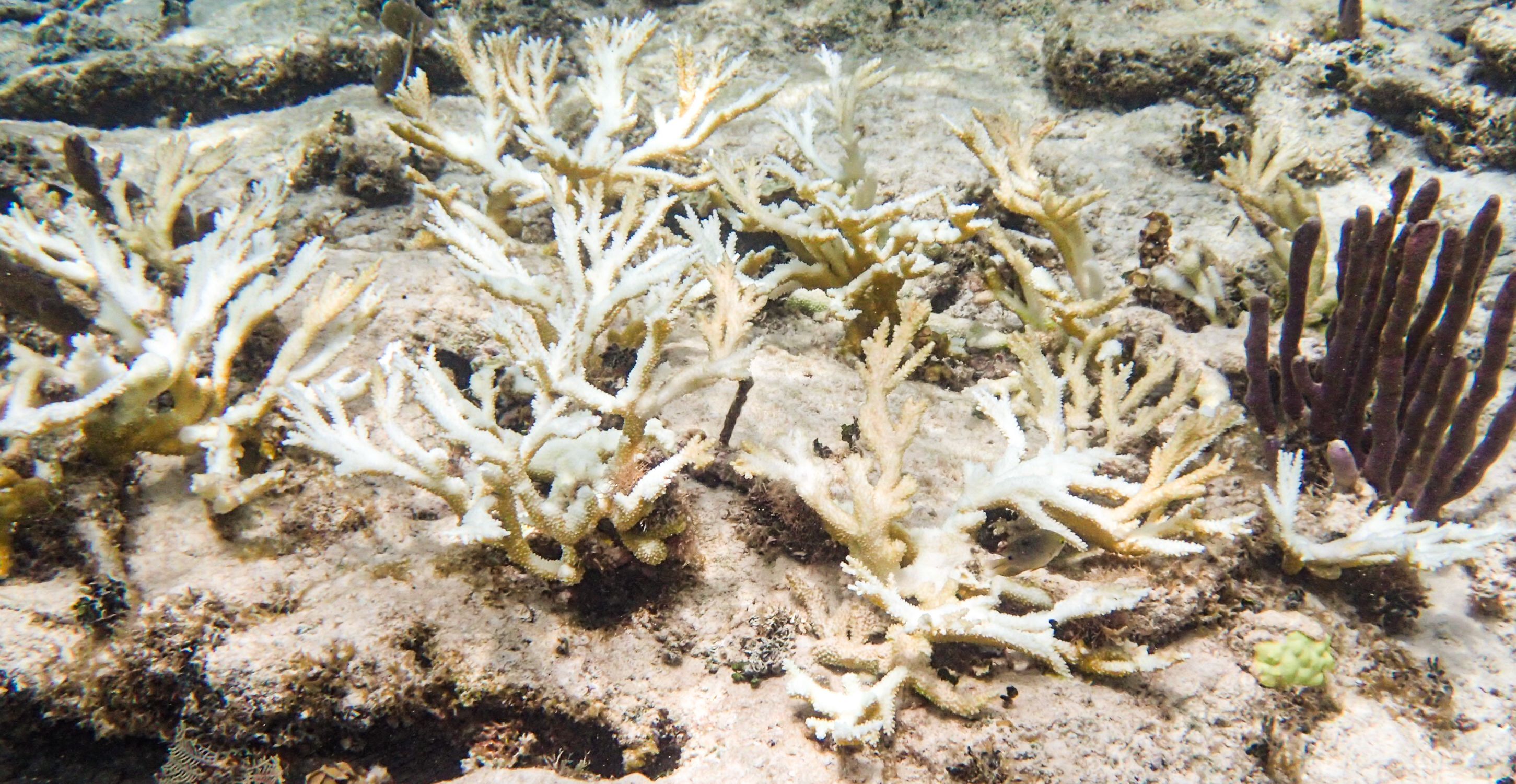
Prolifera coral (bleached), Caye Caulker, Belize
Prolifera coral (bleached), Caye Caulker, Belize
We saw much less bleaching at Turneffe Atoll.
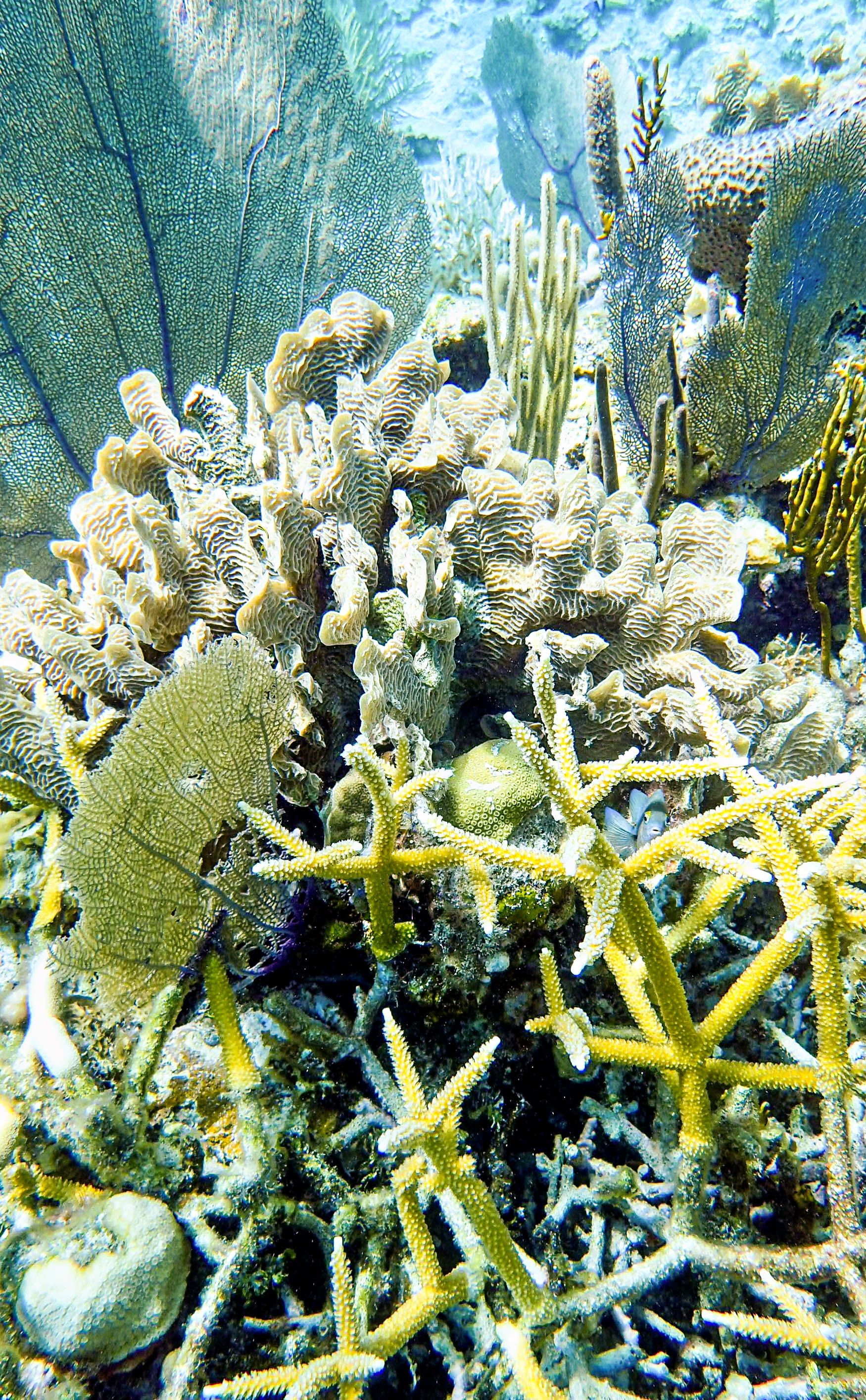
Coral garden (healthy), Turneffe Atoll, Belize
Coral garden (healthy), Turneffe Atoll, Belize
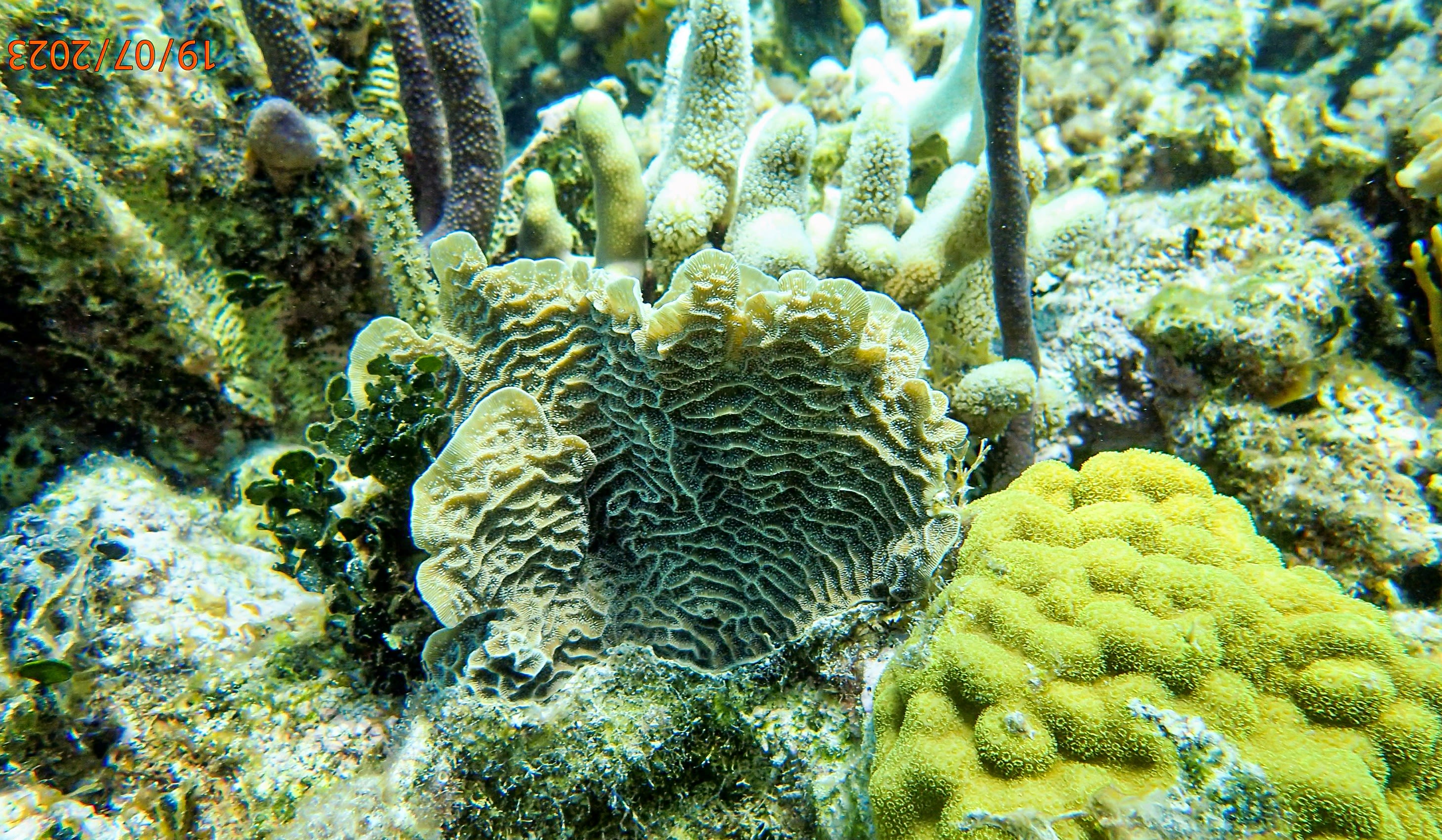
Agaricia coral (healthy), Turneffe Atoll, Belize
Agaricia coral (healthy), Turneffe Atoll, Belize
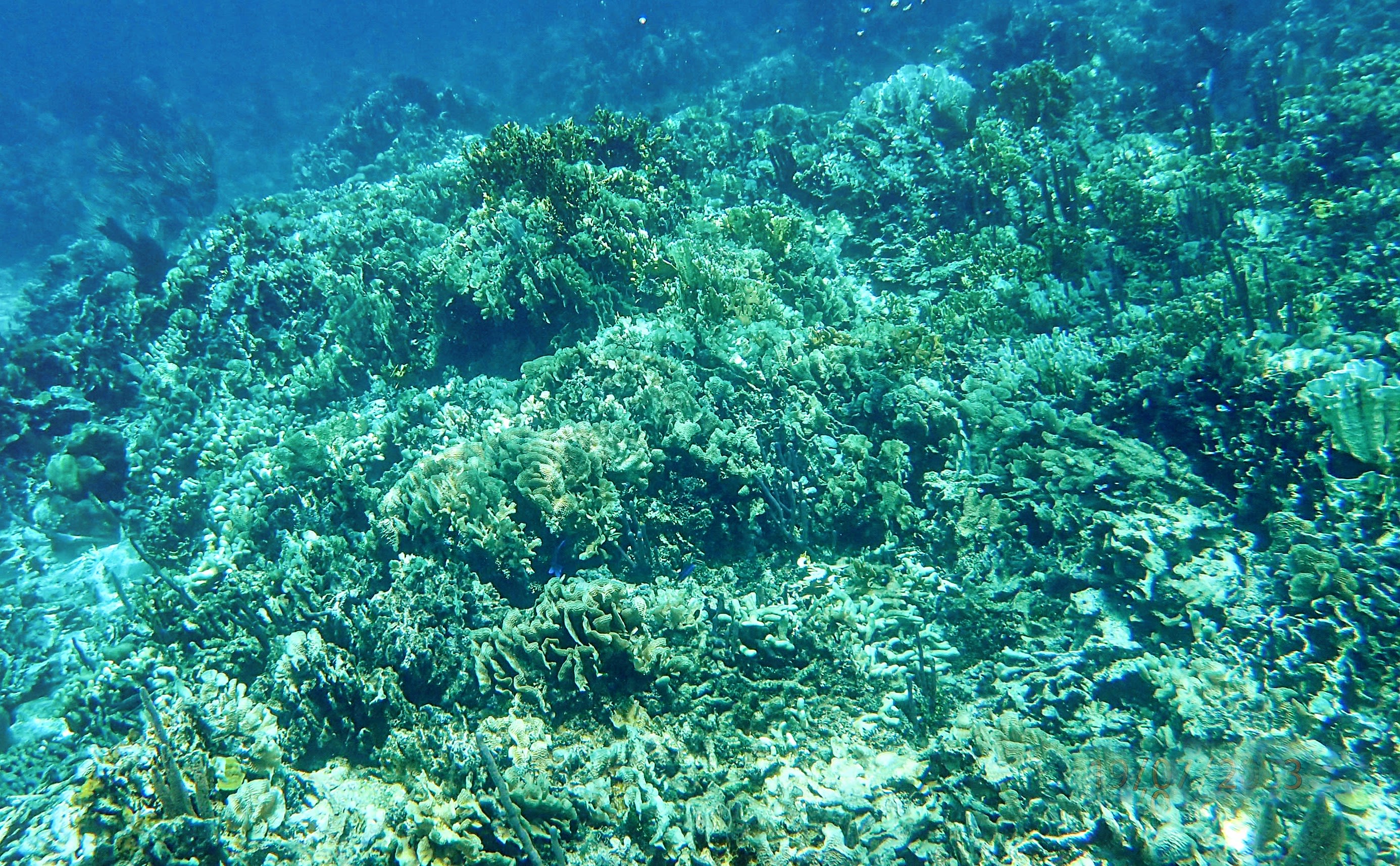
The broad reef (healthy), Turneffe Atoll, Belize
The broad reef (healthy), Turneffe Atoll, Belize
We are working with the Belize government and local NGOs to find where the most heat resistant reefs are located, setting up a training center for coral heat testing, and looking within some of the proposed new marine protected areas for heat resistant corals.
We hope to provide some answers by summer 2024 when the next stage of the Belize protected area plan is discussed.
Future

Our work continues in The Marshall Islands and Belize. Research is expanding to include Hawaii, Indonesia, and Palau.
We have reached out to communities in the Virgin Islands to see if we can help since heatwaves are an increasing problem there.
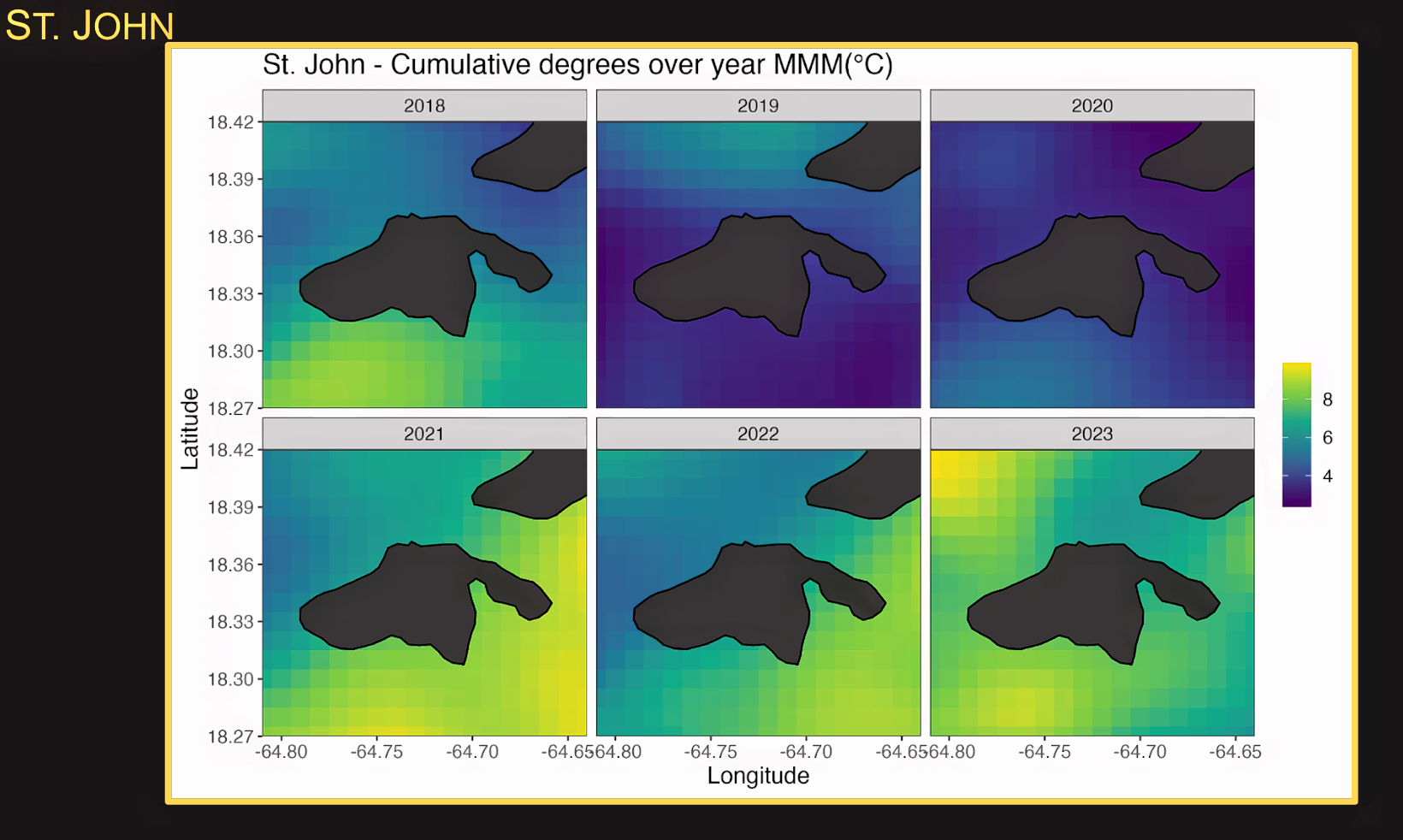
In this figure lighter colors show higher sea water temperatures, mostly to the south of St. John, U.S. Virgin Islands
In this figure lighter colors show higher sea water temperatures, mostly to the south of St. John, U.S. Virgin Islands
©Steve Palumbi, Palumbi Lab, Stanford University
